本文由 ICD 授权mooool发表,欢迎转发,禁止以mooool编辑版本转载。
Thanks ICD for authorizing the publication of the project on mooool, Text description provided by ICD.
ICD:BUGA纤维展馆镶嵌在联邦园艺展览场地的波浪状景观中,留下了未来式建筑的惊鸿一瞥,为游客带来了惊奇的建筑体验。该项目成果建立在斯图加特大学计算设计与建造研究所(ICD)和建筑结构与结构设计研究所(ITKE)多年来对建筑仿生研究的基础上。该展馆向人们展示了如何将尖端的计算技术与自然界的建筑原理相结合,从而开发出真正新颖、真正数字化的建筑系统。展馆的承重结构仅由先进的纤维复合材料制成,这种全球独一无二的结构不仅高效、轻盈,还提供了独特而真实的建筑表达和非凡的空间体验。
ICD:Embedded in the wavelike landscape of the Bundesgartenschau grounds, the BUGA Fibre Pavilion offers visitors an astounding architectural experience and a glimpse of future construction. It builds on many years of biomimetic research in architecture at the Institute for Computational Design and Construction (ICD) and the Institute for Building Structures and Structural Design (ITKE) at the University of Stuttgart. The pavilion demonstrates how combining cutting-edge computational technologies with constructional principles found in nature enables the development of truly novel and genuinely digital building system. The pavilion’s load-bearing structure is robotically produced from advanced fibre composites only. This globally unique structure is not only highly effective and exceptionally lightweight, but it also provides a distinctive yet authentic architectural expression and an extraordinary spatial experience.
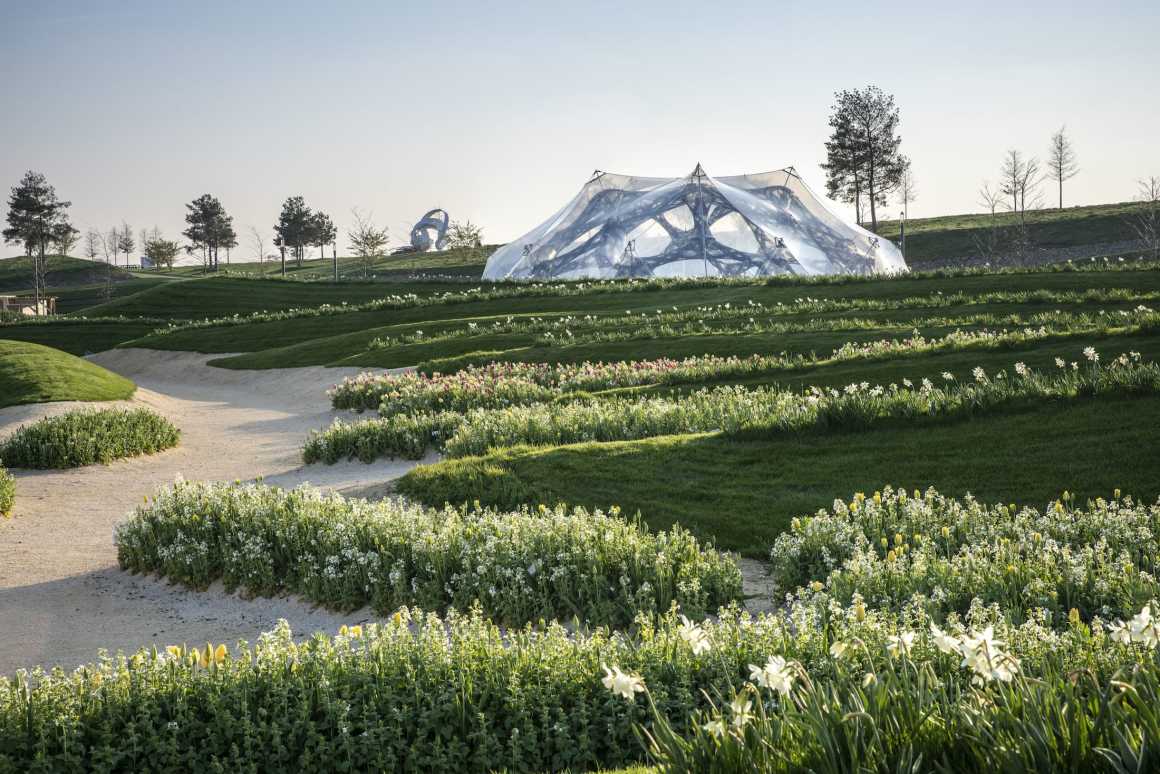
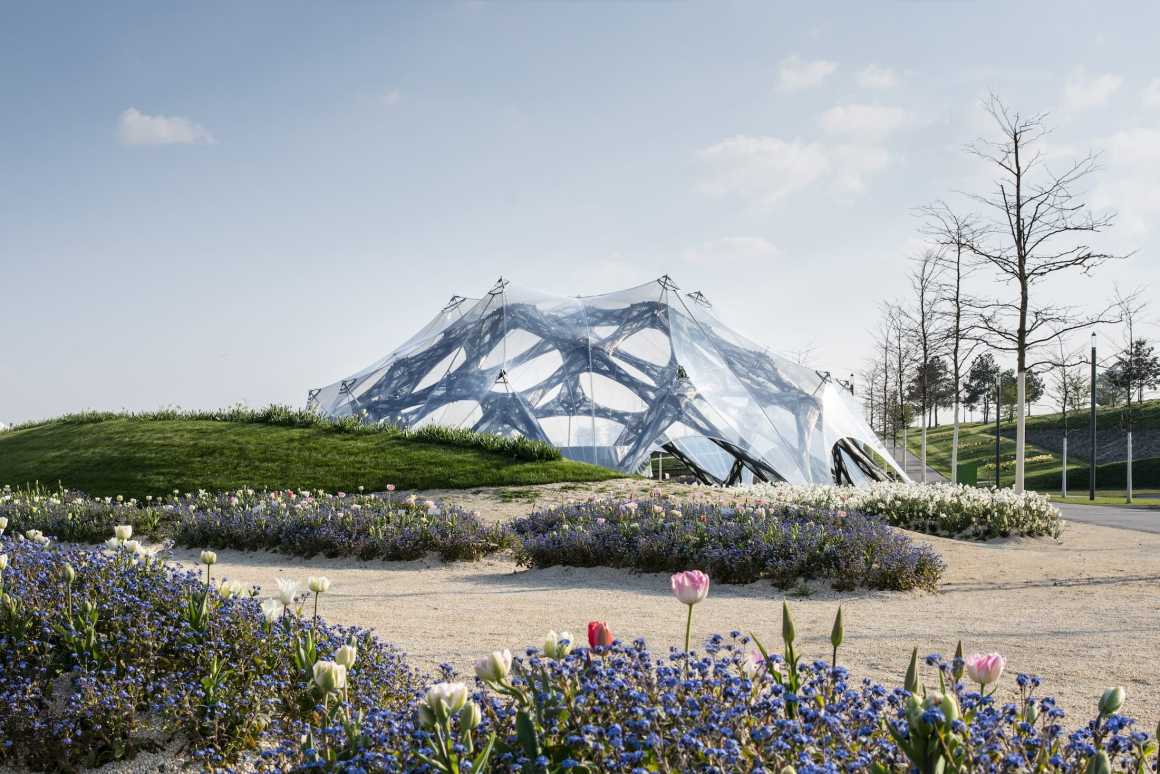
灵感来自大自然的新型复合建筑系统 Novel composite building system inspired by nature
在生物学中,大多数承重结构属于纤维复合材料。它们由纤维合成,例如纤维素、几丁质或胶原蛋白以及支撑它们并保持其相应位置的基质材料。生物结构中惊人的性能和无与伦比的资源效率都源于这些纤维系统,它们的组织结构、方向性和密度都经过了精心调整,并根据局部情况产生相应变化,以确保材料只放在需要的地方。
BUGA纤维展馆旨在将这种适应负载的生物原理及其高度分化的纤维复合系统转化为建筑。人造复合材料,如用于该建筑的玻璃纤维或碳纤维增强塑料,非常适合这种方法,因为它们与天然复合材料具有相同的基本特性。
该项目建立在计算设计与斯图加特大学建造研究所(ICD)和建筑结构与结构设计研究所(ITKE)多年仿生研究成果的基础上。它向人们展示了如何跨学科地探索生物学原理和最新的计算技术,可以导致一个真正新颖和真正的数字纤维复合建筑系统。就在几年前,这个展馆还不可能被设计或建造。
In biology most load-bearing structures are fibre composites. They are made from fibres, as for example cellulose, chitin or collagen, and a matrix material that supports them and maintains their relative position. The astounding performance and unrivalled resource efficiency of biological structures stems from these fibrous systems. Their organization, directionality and density is finely tuned and locally varied in order to ensure that material is only placed where it is needed.
The BUGA Fibre Pavilion aims to transfer this biological principle of load-adapted and thus highly differentiated fibre composite systems into architecture. Manmade composites, such as the glass- or carbon-fibre-reinforced plastics that were used for this building, are ideally suited for such an approach, because they share their fundamental characteristics with natural composites.
The project builds on many years of biomimetic research at the Institute for Computational Design and Construction (ICD) and the Institute for Building Structures and Structural Design (ITKE). It shows how an interdisciplinary exploration of biological principles together with the latest computational technologies can lead to a truly novel and genuinely digital fibre composite building system. Only a few years ago, this pavilion would have been impossible to design or build.
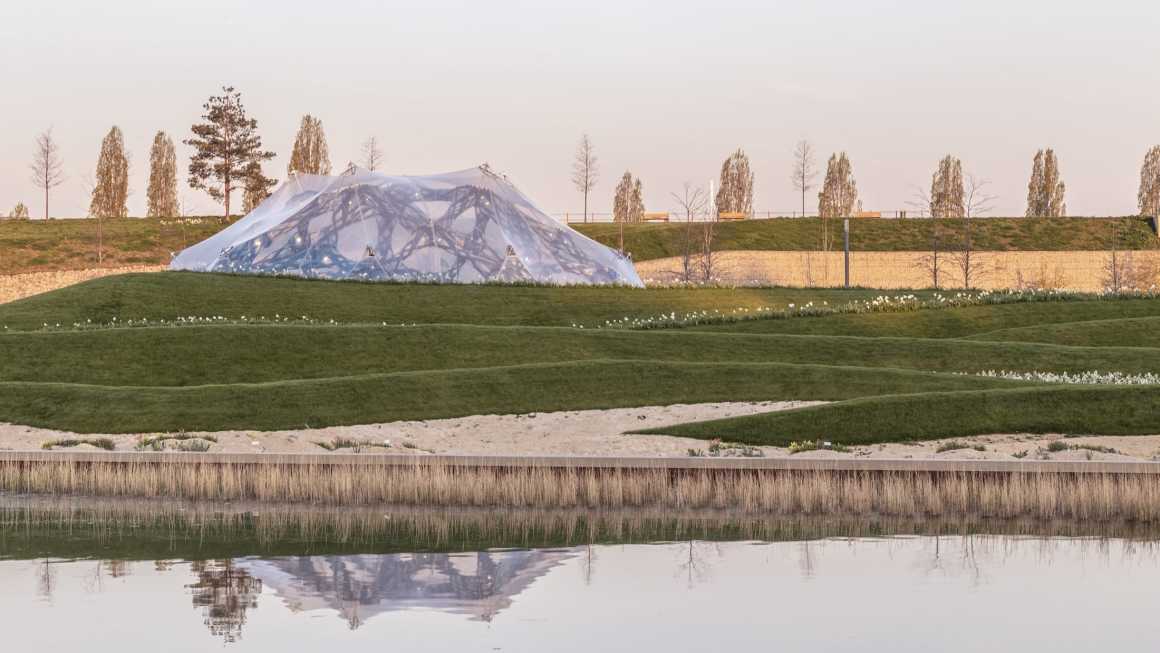
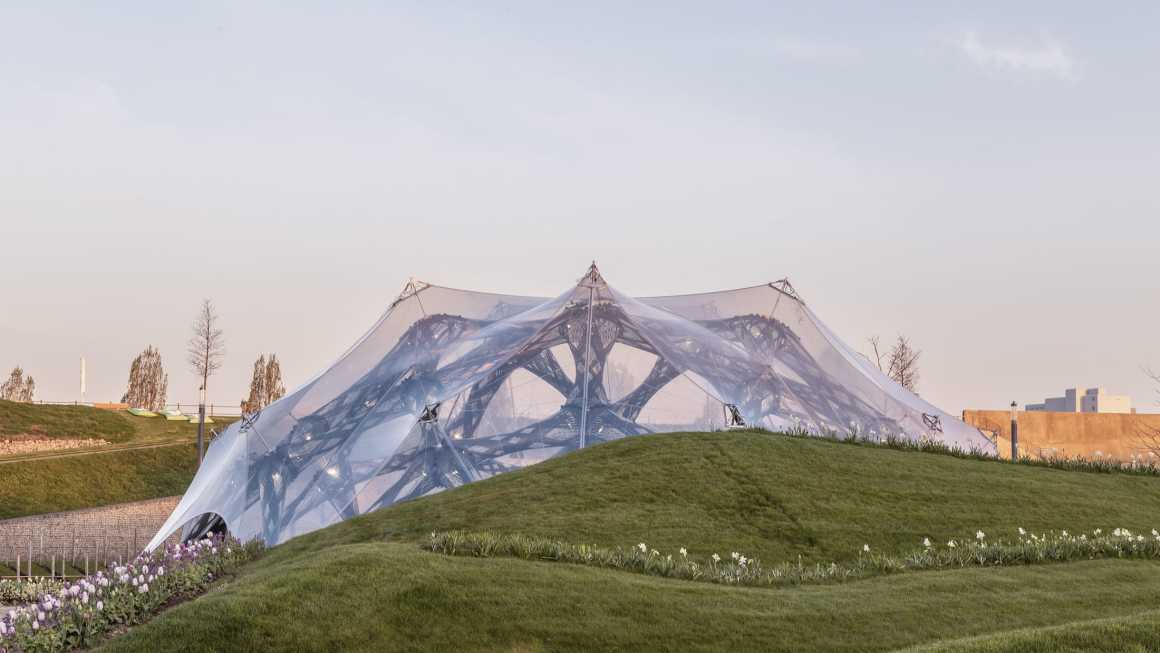
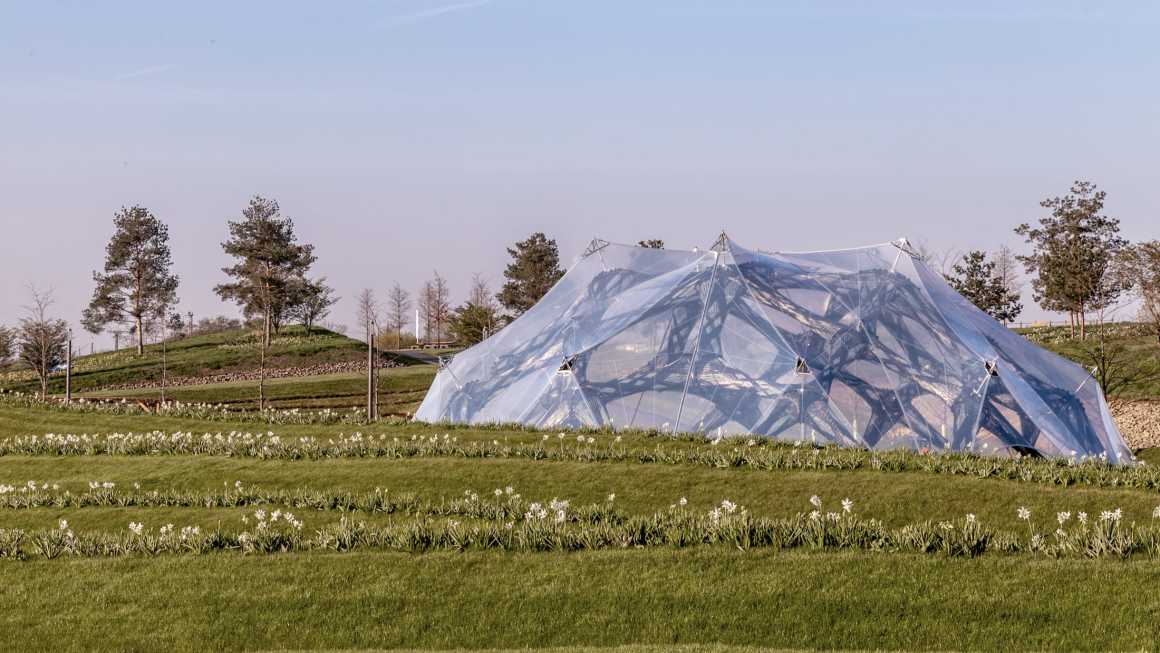
独特轻盈的结构和富有表现力的建筑空间 Unique lightweight structure and expressive architectural space
展馆占地面积约400平方米,跨度超过23米,由完全透明的机械预应力ETFE膜包裹,其主承重结构仅由60个定制纤维复合材料组成,它非常轻盈,大约比传统的钢结构轻五倍,但每平方米可承重7.6公斤,全面批准所需的复杂测试程序表明,单一纤维成分可承受高达250千牛顿的压缩力,相当于约25吨或15辆汽车的重量。该展馆展示了一种真正融合计算机设计和机器人制造的方法,使新型、真正的数字纤维复合建筑系统的开发成为可能,这些系统完全符合严格的德国建筑法规,非常轻便、结构高效且建筑表现力强。
The pavilion covers a floor area of around 400 square meters and achieves a free span of more than 23 meters. It is enclosed by fully transparent, mechanically pre-stressed ETFE membrane. The primary load bearing structure is made from 60 bespoke fibre composite components only. With 7.6 kilograms per square meter it is exceptionally lightweight, approximately five times lighter than a more conventional steel structure. Elaborate testing procedures required for full approval showed that a single fibrous component can take up to 250 kilo newton of compression force, which equals around 25 tons or the weight of more than 15 cars. The pavilion shows how a truly integrative approach to computational design and robotic fabrication enables the development of novel, truly digital fibre composite building systems that are fully compliant with the stringent German building regulations, exceptionally light, structurally efficient and architecturally expressive.

该展馆将技术层面的创新转化为独特的建筑体验。黑色碳纤维束像弯曲的肌肉一样包裹在半透明的玻璃纤维网格,在纹理上形成了鲜明的对比,展馆外层完全透明的纤维膜更加突出了这一点。这种独特的建筑连接进一步加强了从顶部稀疏的碳丝到与地面最薄的组件上更密集的应用的梯度。虽然大多数游客可能从未见过这样的建筑,但展馆以一种可解释又富有表现力的方式展示了其基本设计原则。它不熟悉但真实的建筑表达唤起了数字化制造的新方式,这不再是一个未来的命题,而是已经成为了一个有形的现实。
The pavilion translates the innovation on a technical level into a unique architectural experience. The black carbon filament bundles, wrapping around the translucent glass fibre lattice like flexed muscles, create a stark contrast in texture that is highlighted by the pavilion’s fully transparent skin. This distinctive architectural articulation is further intensified by the gradient from sparser carbon filaments at the top towards their denser application on the slenderest components that meet the ground. While most visitors may not have seen anything like it before, the pavilion exposes its underlying design principles in an explicable yet expressive way. Its unfamiliar yet authentic architectural articulation evokes new ways of digital making, which no longer remain a futuristic proposition but already have become a tangible reality.
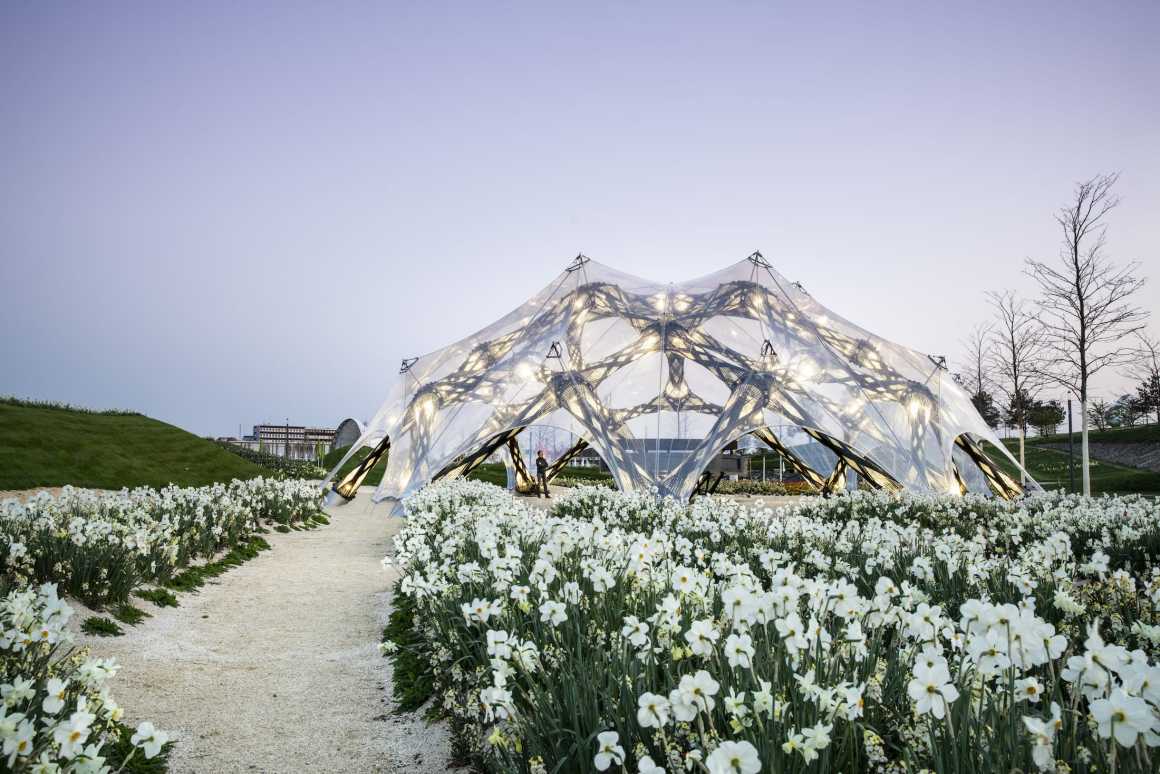
综合计算设计和机器人制造 Integrative computational design and robotic fabrication
展馆由超过150,000米的玻璃和碳纤维立体支撑构成。它们都需要进行单独设计和放置,这在典型的线性工作流程和既定的生产技术中很难实现,因此,我们需要一种新的协同设计方法,在这种方法中,建筑设计、结构工程和机器人制造是在连续的计算反馈中进行的。通过这种方式,每个建筑构件的纤维排列、密度和朝向可以单独进行校准、结构调整和建筑铰接,同时能保证可直接生产。
The pavilion is made from more than 150.000 meters of spatially arranged glass- and carbon fibres. They all need to be individually designed and placed, which is very hard to achieve with a typical linear workflow and established production technologies. Thus, it requires a novel co-design approach, where architectural design, structural engineering and robotic fabrication are developed in continuous computational feedback. In this way, the fibre arrangement, density and orientation of each building component can be individually calibrated, structurally tuned and architecturally articulated, while remaining directly producible.
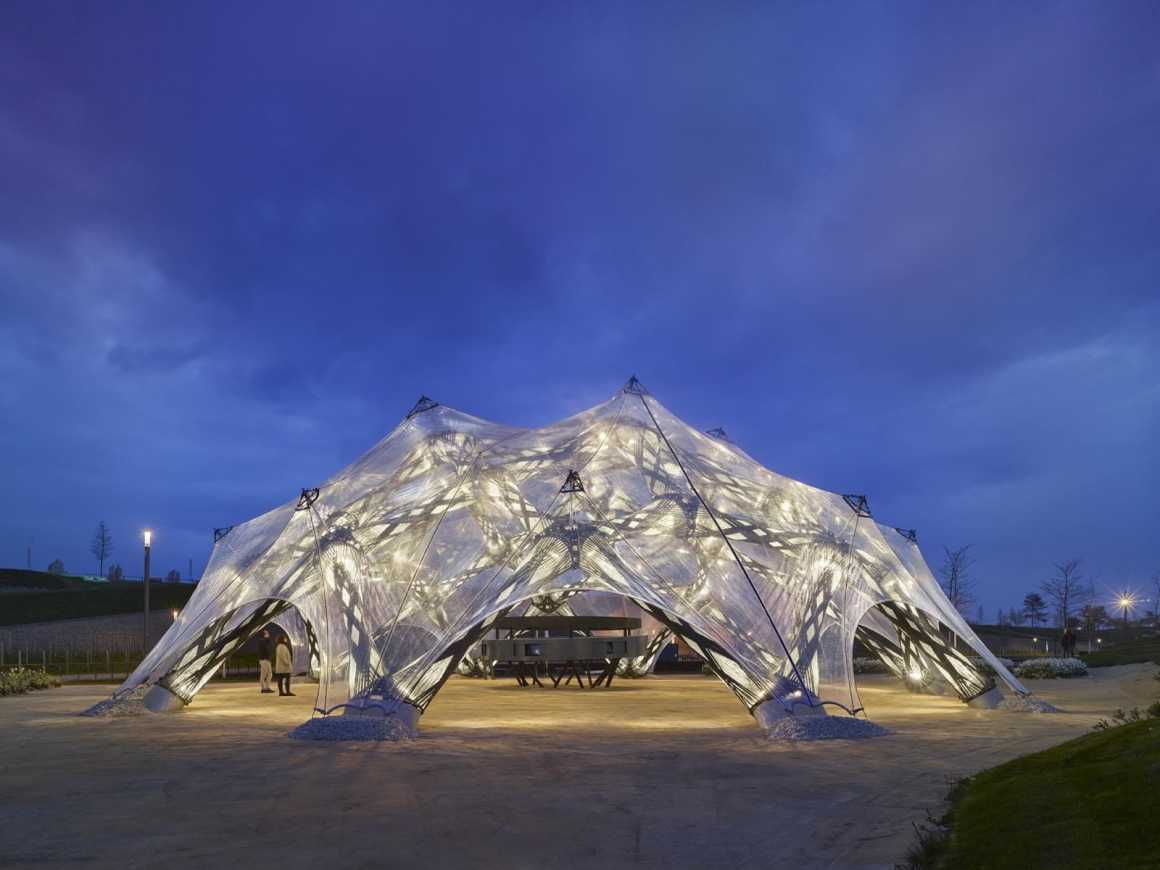

展馆建筑构件由机器人通过缠绕无芯纤维而成,这是斯图加特大学首创并开发的一种新型增材制造方法。由机器人将纤维丝自由地放置在两个旋转的缠绕支架之间,在这个过程中,建筑构件的预定义形状仅从细丝的相互作用中显现出来,消除了对任何模具或型芯的需求,这种定制形式和每个组件单独铺设的纤维与传统制作方法相比,没有任何经济上的劣势,此外,这种生产方式不会产生废料或下脚料,制造过程中产生的半透明玻璃纤维网格和黑色碳纤维可放置在需要它们的结构上,帮助高度适应负载的组件形成高度不同的体系结构外观。
The building components are produced by robotic, coreless filament winding, a novel additive manufacturing approach pioneered and developed at the University of Stuttgart. Fibrous filaments are freely placed between two rotating winding scaffolds by a robot. During this process, the predefined shape of the building component emerges only from the interaction of the filaments, eliminating the need for any mould or core. This allows for bespoke form and individual fibre layup for each component without any economic disadvantage. In addition, there is no production waste or material off-cuts. During manufacturing, a lattice of translucent glass fibres is generated, onto which the black carbon fibres are placed where they are structural needed. This results in highly load-adapted components with a highly distinct architectural appearance.

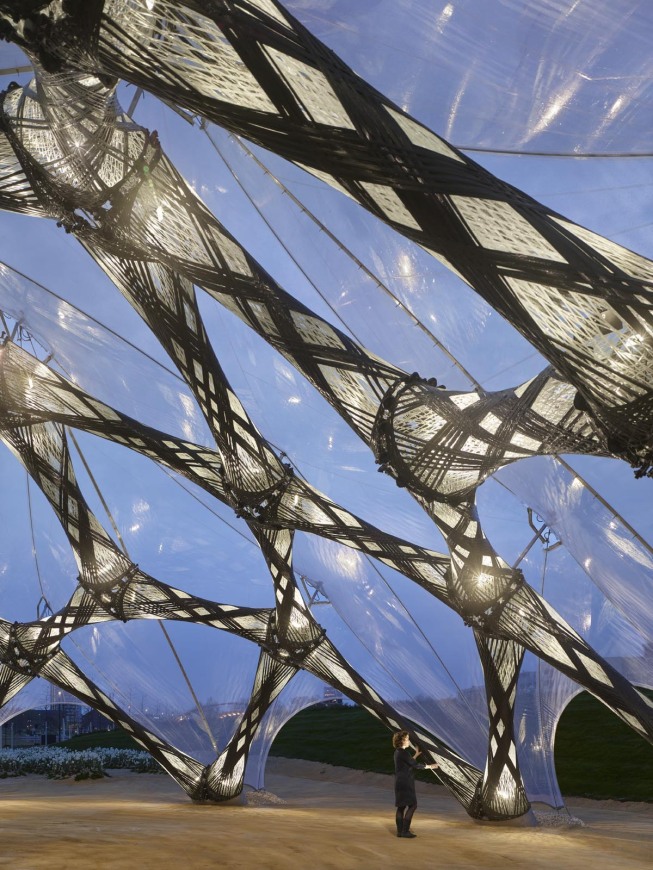
该项目的工业合作伙伴FibR GmbH承包了所有生产任务。组件由大约1.000米的玻璃纤维和1.600米的碳纤维制成,制作每个组件平均需要4到6个小时。
Full production took place at the project’s industrial partner FibR GmbH. Each component takes between four to six hours to make from around 1.000 meters of glass fibre and 1.600 meters of carbon fibre on average.
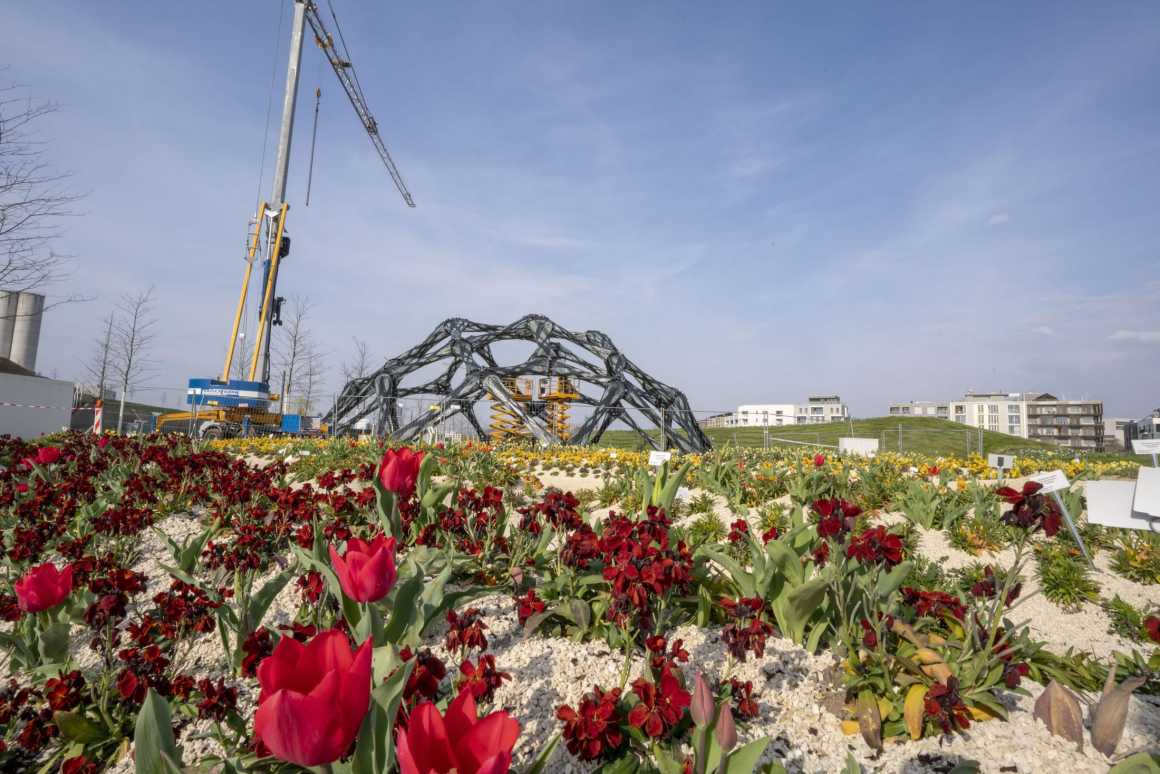
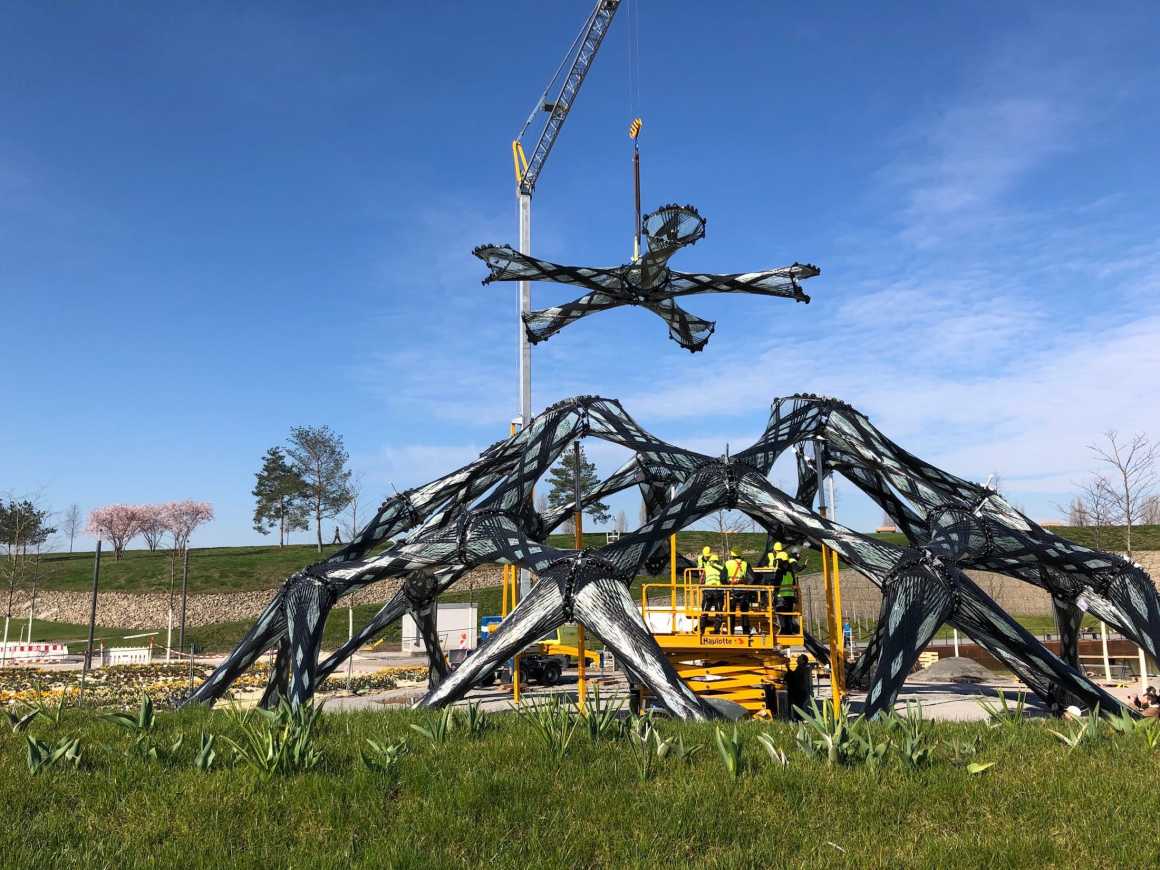
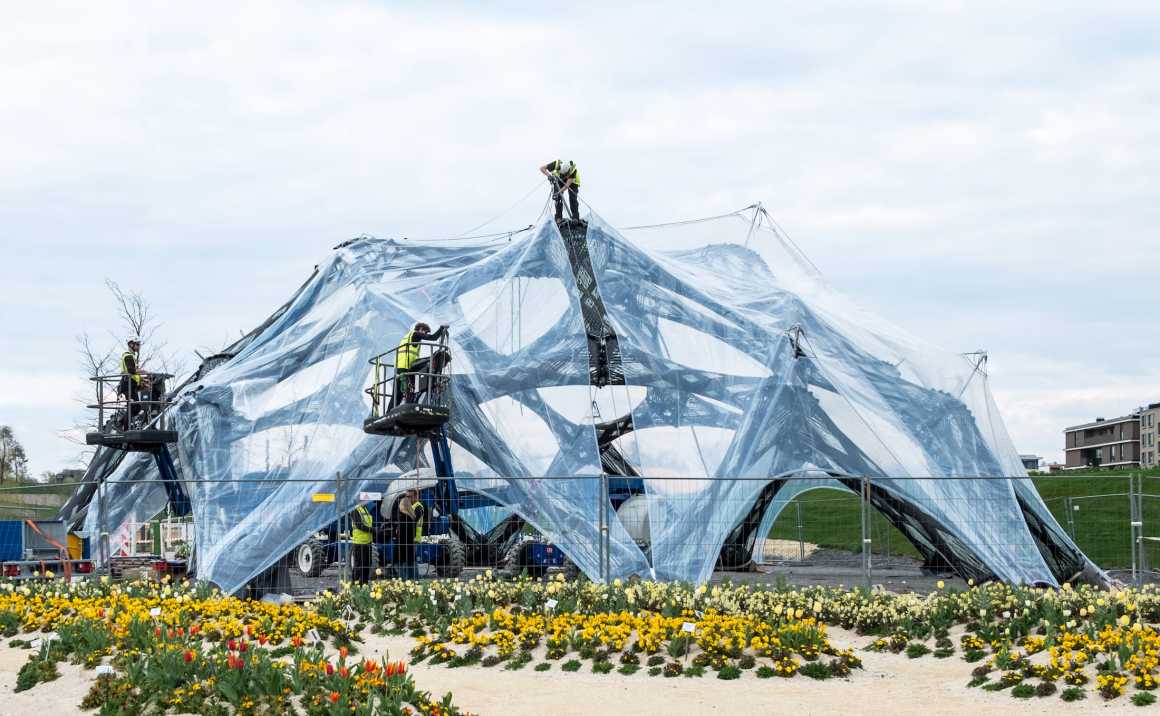
▼展厅细节 The Pavilion detail
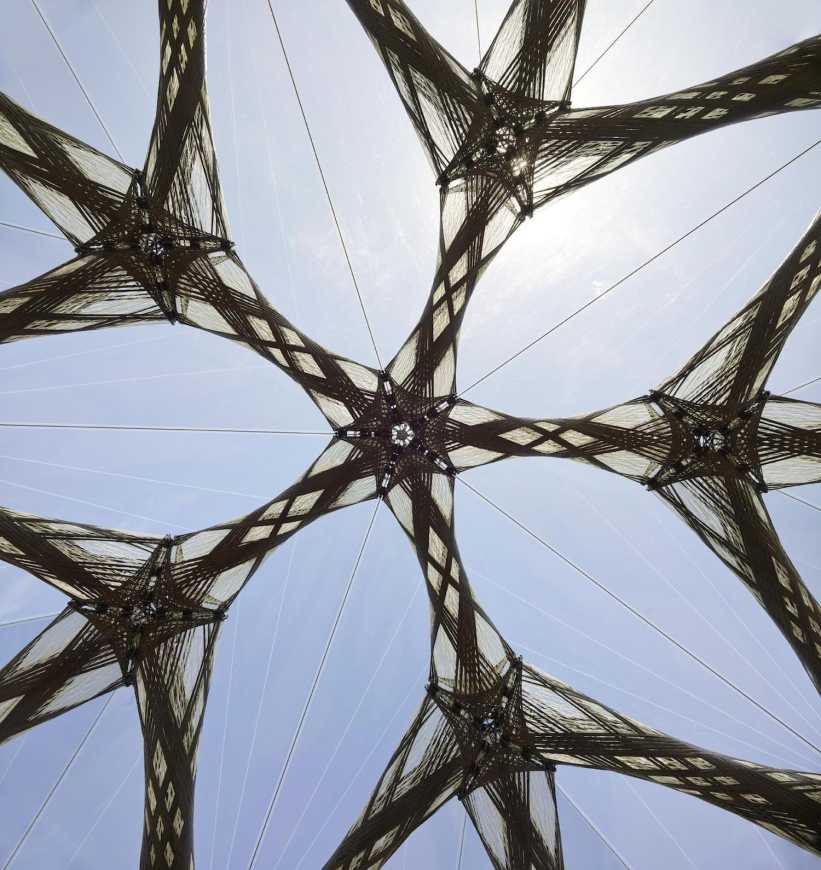
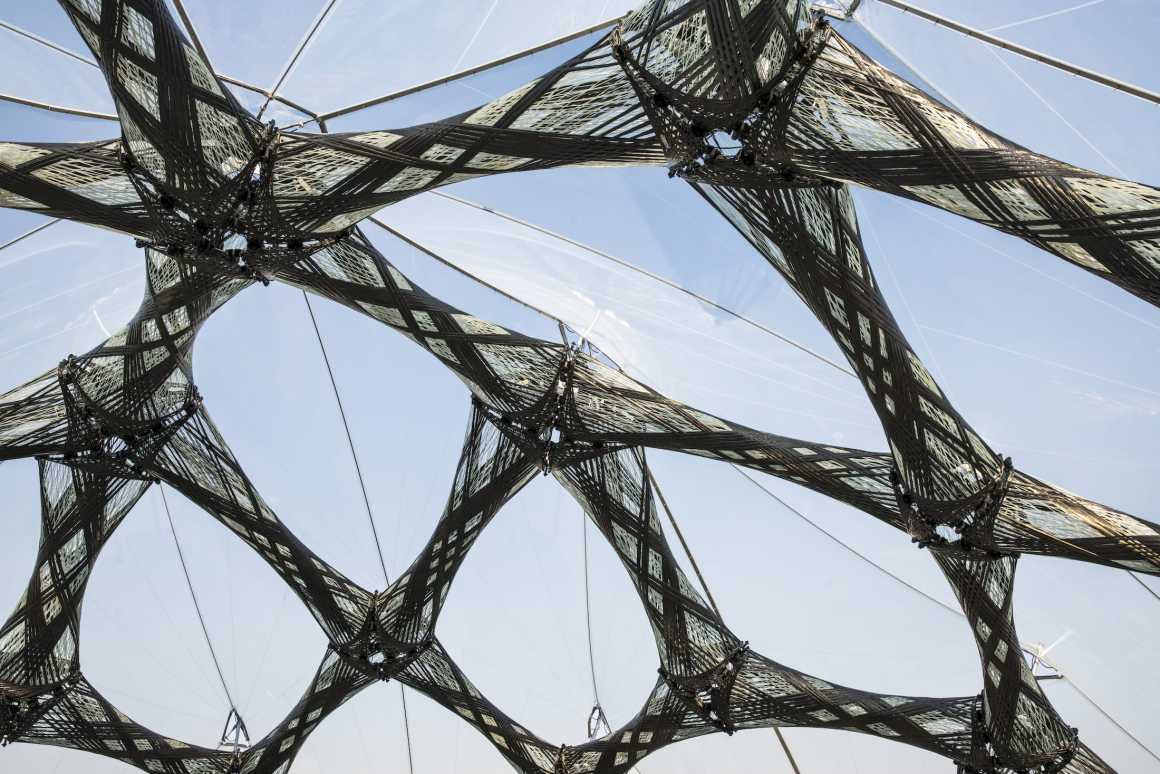
▼基地平面 Site Plan

▼展馆平面 The Pavilion Plan
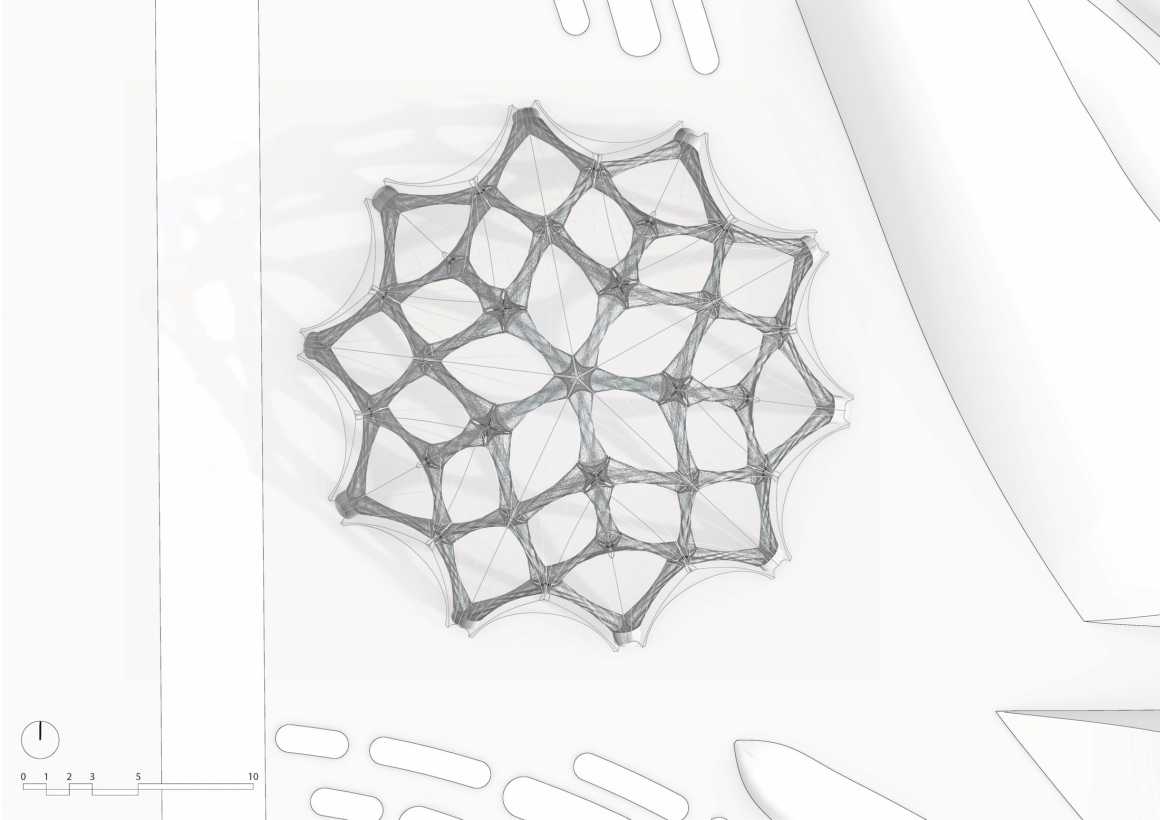
▼展馆剖面 The PavilionSection
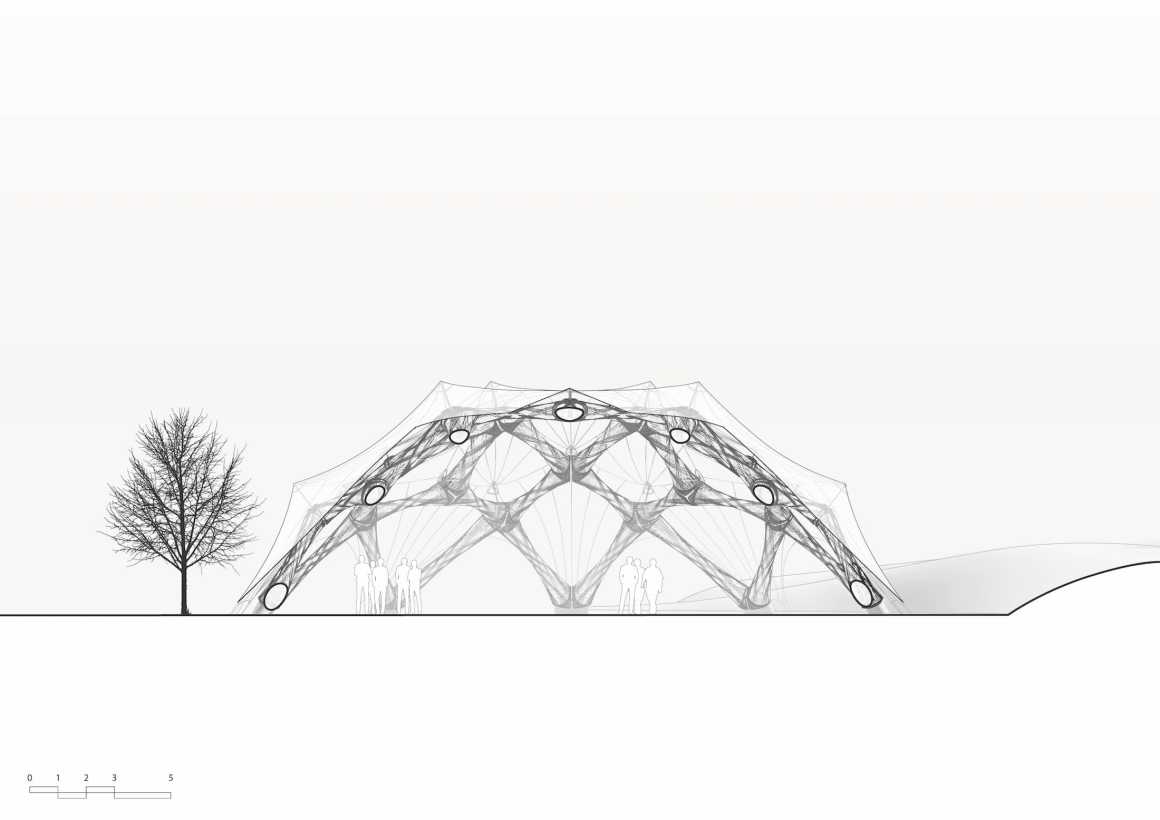
▼设计图纸 Diagrams © ICD-ITKE
▼制作过程 Construction Process © ICD-ITKE
▼安装过程 Assembly Process © ICD-ITKE
BUGA纤维展馆位于2019年德国联邦园艺展夏季岛的中心,将举办“Zukunftskarusell”展览。它已于2019年4月17日由巴登-符腾堡州总统部长宣布开幕。其纤维复合材料建筑系统和结构的研究,也将在斯图加特大学新成立的“建筑综合计算设计与施工”优秀集群的背景下进一步开展。
The BUGA Fibre Pavilion is centrally located on the Summer Island of the Bundesgartenschau 2019 and will house the exhibition “Zukunftskarusell”. It was opened on 17th of April 2019 by the Minister President of the State of Baden-Wuerttemberg. The research on fibre composite building systems and structures will be further pursued in the context of the new Cluster of Excellence “Integrative Computational Design and Construction for Architecture” at the University of Stuttgart.

项目数据
尺寸:直径23米,覆盖面积400 m²,纤维复合结构承重:7、6公斤/ m²
施工系统:在150.000米的玻璃和碳纤维中,共有60个机械制造的玻璃和碳纤维复合材料元件承受载荷;透明,机械预应力ETFE膜
项目合作伙伴
ICD -斯图加特大学计算设计与建造研究所
团队成员:Achim Menges教授,Serban Bodea, Niccolo Dambrosio, Monika Gobel, Christoph Zechmeister
ITKE——斯图加特大学建筑研究和结构设计
团队成员:Jan Knippers教授,Valentin Koslowski, Marta Gil Pérez, Bas Rongen
斯图加特FibR GmbH
团队成员:Moritz Dorstelmann, Ondrej Kyjanek, Philipp Essers, Philipp Gulke
Bundesgartenschau Heilbronn 2019有限公司
团队成员:Hanspeter Faas, Oliver Toellner
工程建设许可流程
Landesstelle fur Bautechnik: Stefan Brendler博士,Dipl.-Ing. Steffen Schneider
证明工程师:Dipl.-Ing. Achim Bechert, Dipl.-Ing. Florian Roos
德国纺织纤维研究所:Dr.-Ing教授,Götz T. Gresser, Pascal Mindermann
项目支持
Land Baden-Württemberg
Universität Stuttgart
Baden-Württemberg Stiftung
GETTYLAB
Forschungsinitiative Zukunft Bau
Pfeifer GmbH
Ewo GmbH
Fischer Group
Project Data
Dimensions: 23m diameter, Covered Area: 400m², Weight of loadbearing fibre composite structure: 7,6kg/m²
Construction System: 60 load bearing robotically fabricated glass- and carbon fibre composite elements, out of 150.000m glass- and carbon fibres; transparent, mechanically pre-stressed ETFE membrane
Project Partners
ICD – Institute for Computational Design and Construction, University of Stuttgart
Team member: Prof. Achim Menges, Serban Bodea, Niccolo Dambrosio, Monika Göbel, Christoph Zechmeister
ITKE – Institute of Building Structures and Structural Design, University of Stuttgart
Team member: Prof. Jan Knippers, Valentin Koslowski, Marta Gil Pérez, Bas Rongen
FibR GmbH, Stuttgart
Team member: Moritz Dörstelmann, Ondrej Kyjanek, Philipp Essers, Philipp Gülke
Bundesgartenschau Heilbronn 2019 GmbH
Team member: Hanspeter Faas, Oliver Toellner
Project Building Permit Process
Landesstelle für Bautechnik: Dr. Stefan Brendler, Dipl.-Ing. Steffen Schneider
Proof Engineer: Dipl.-Ing. Achim Bechert, Dipl.-Ing. Florian Roos
DITF German Institutes of Textile and Fiber Research: Prof. Dr.-Ing. Götz T. Gresser, Pascal Mindermann
Project Funding
Land Baden-Württemberg
Universität Stuttgart
Baden-Württemberg Stiftung
GETTYLAB
Forschungsinitiative Zukunft Bau
Pfeifer GmbH
Ewo GmbH
Fischer Group
更多 Read more about: ICD


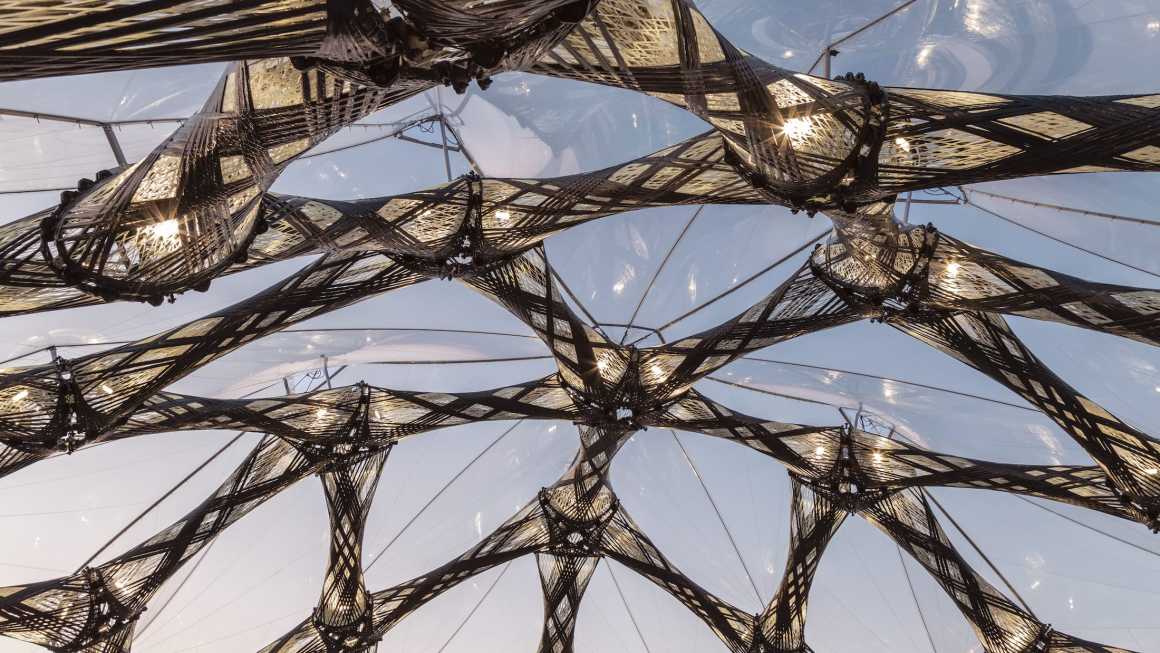
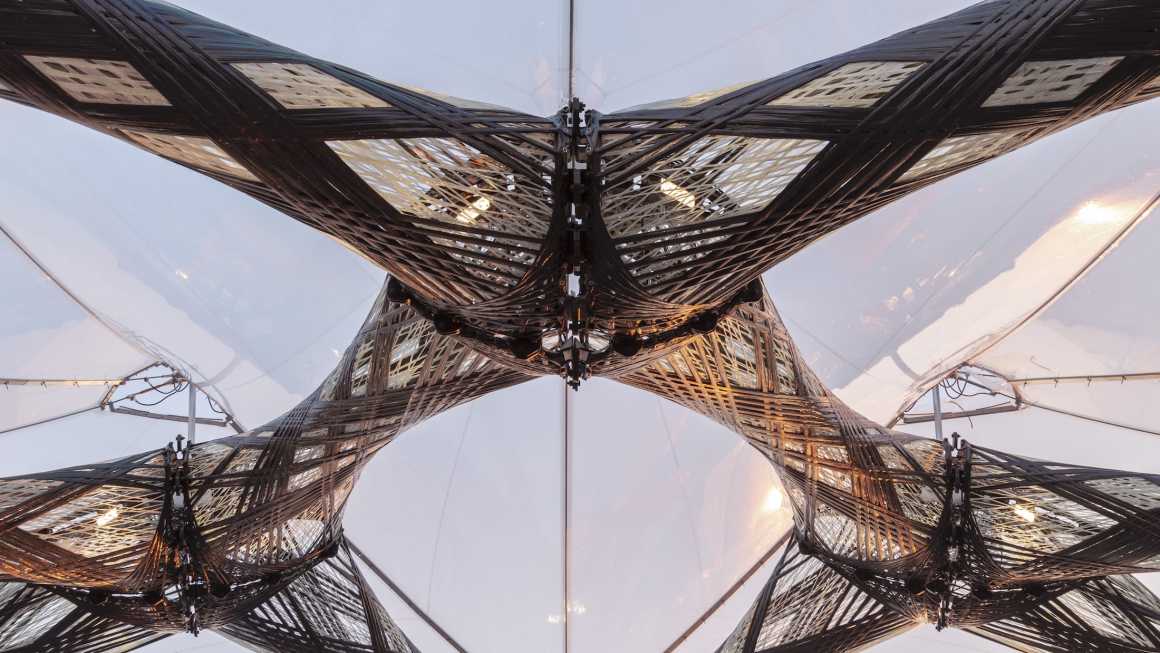
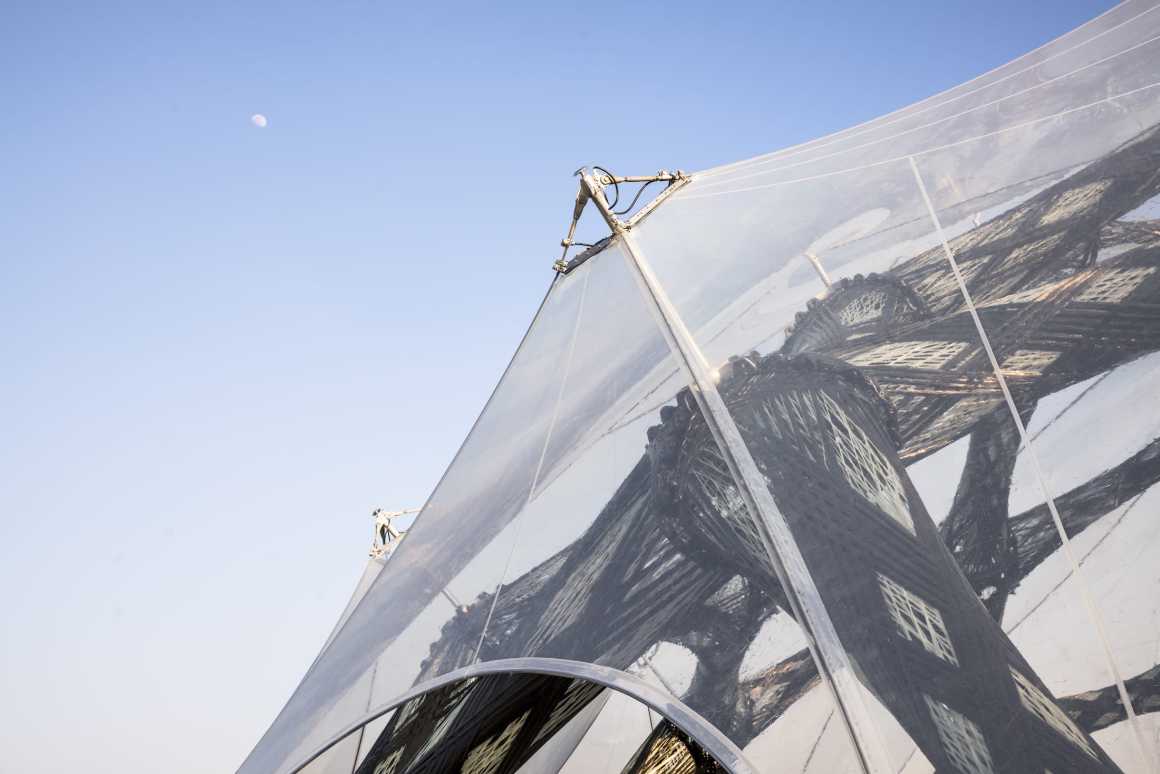

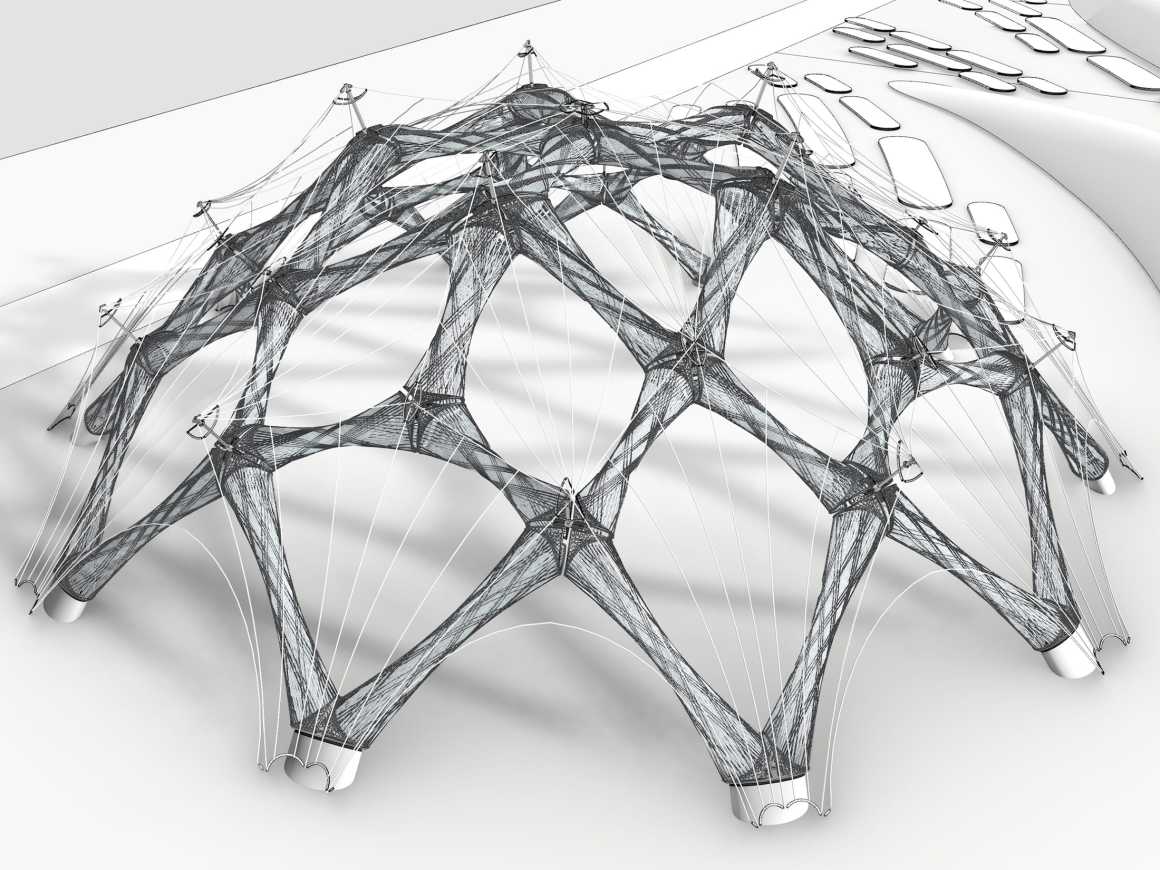
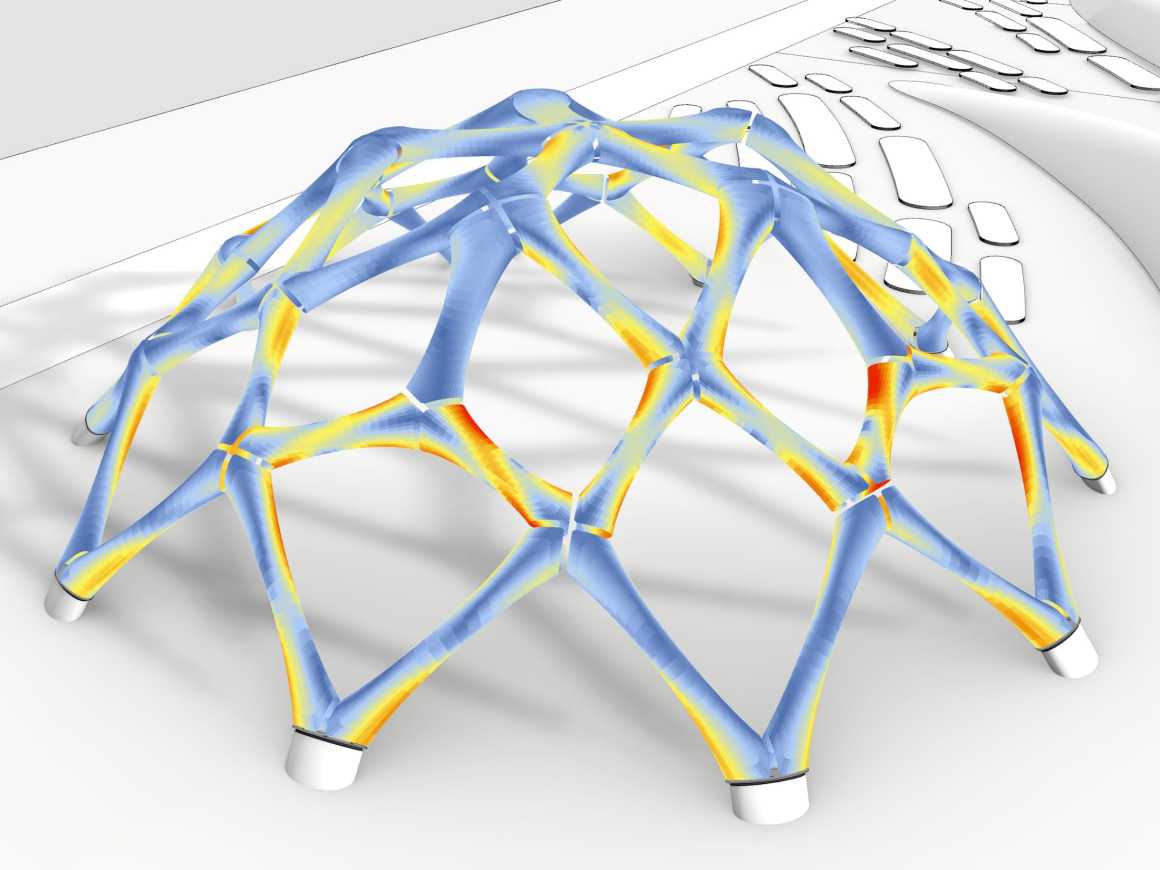
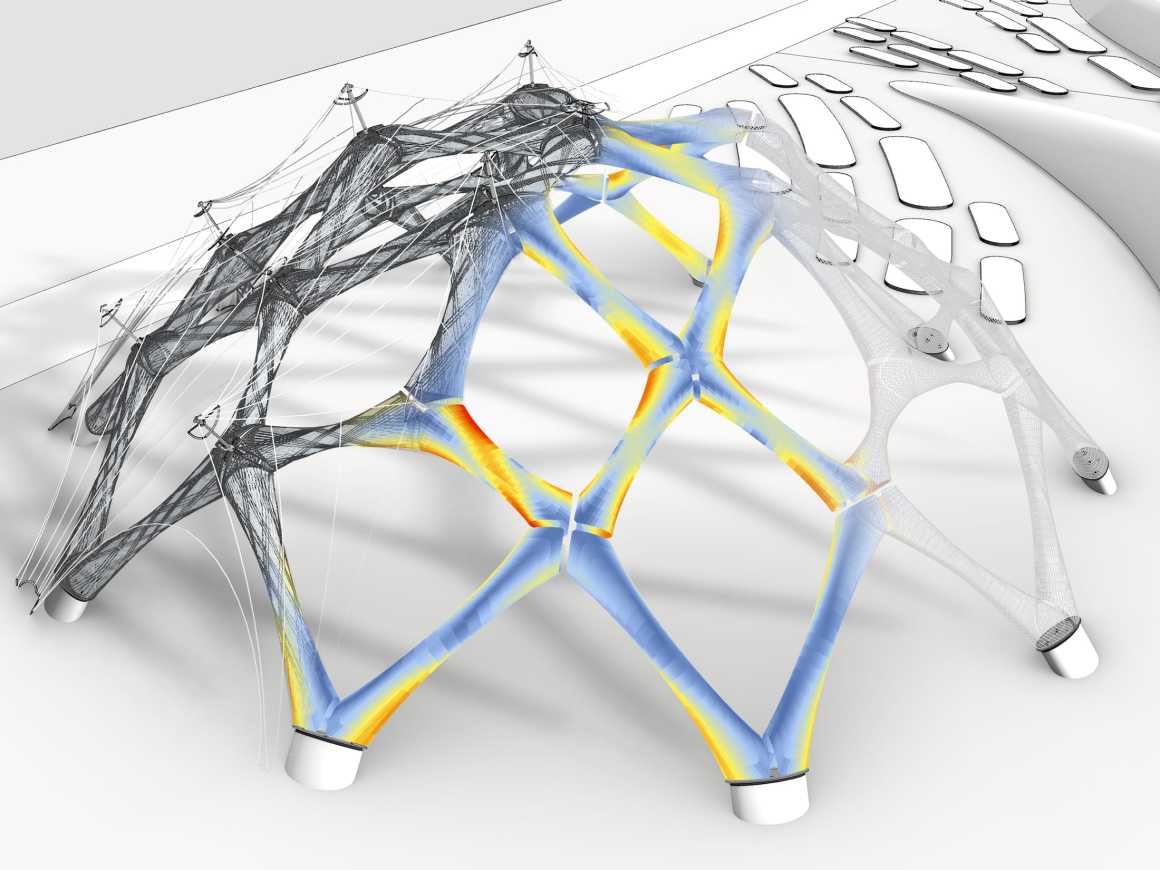
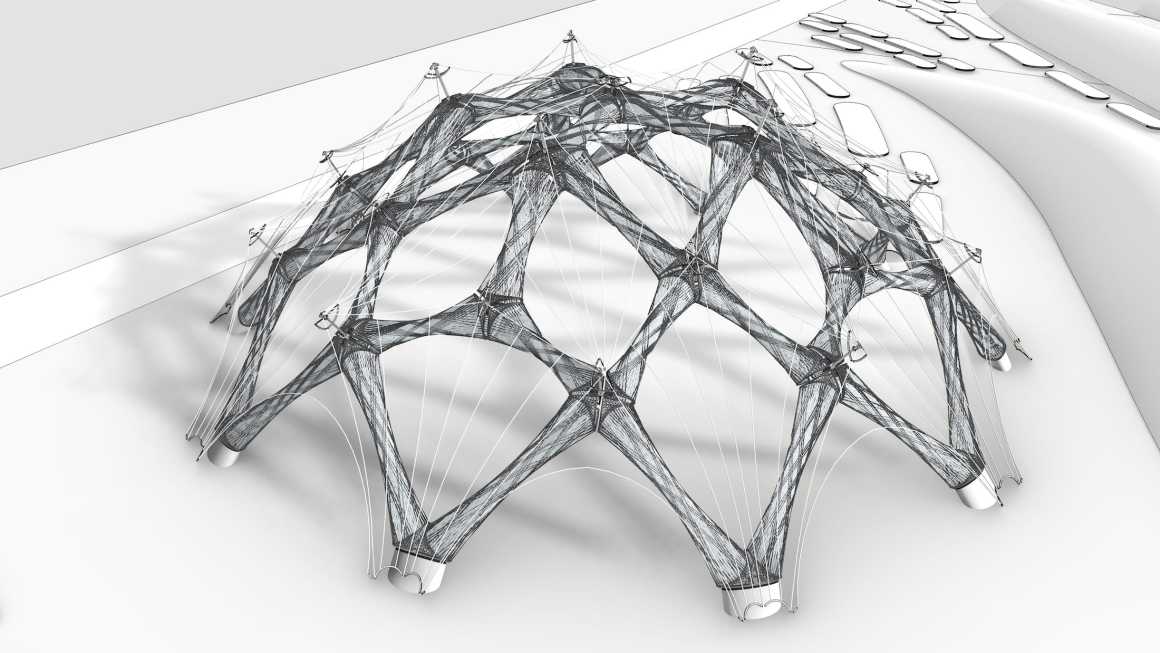

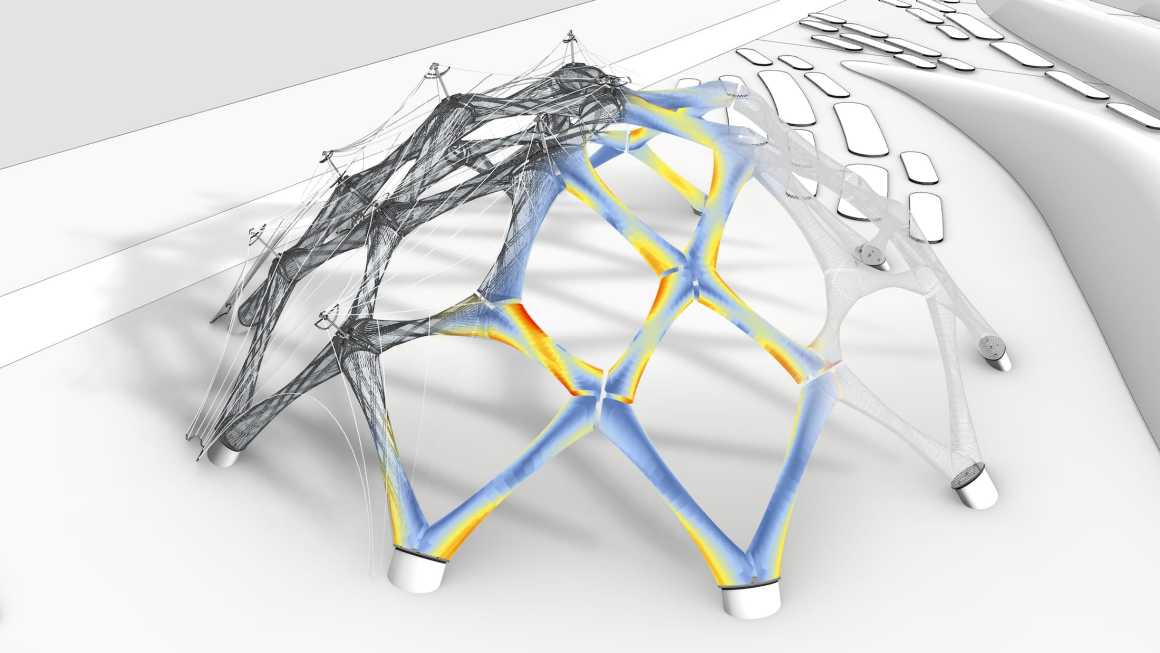
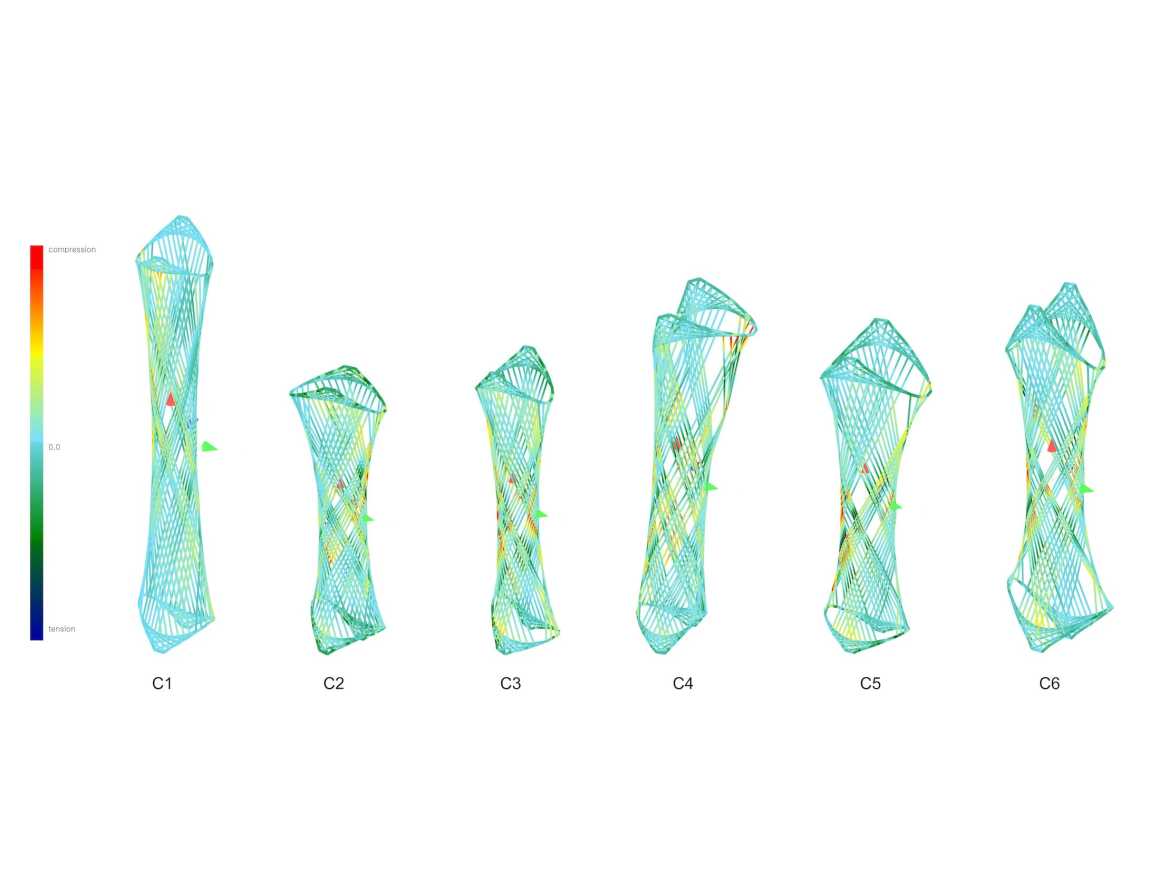
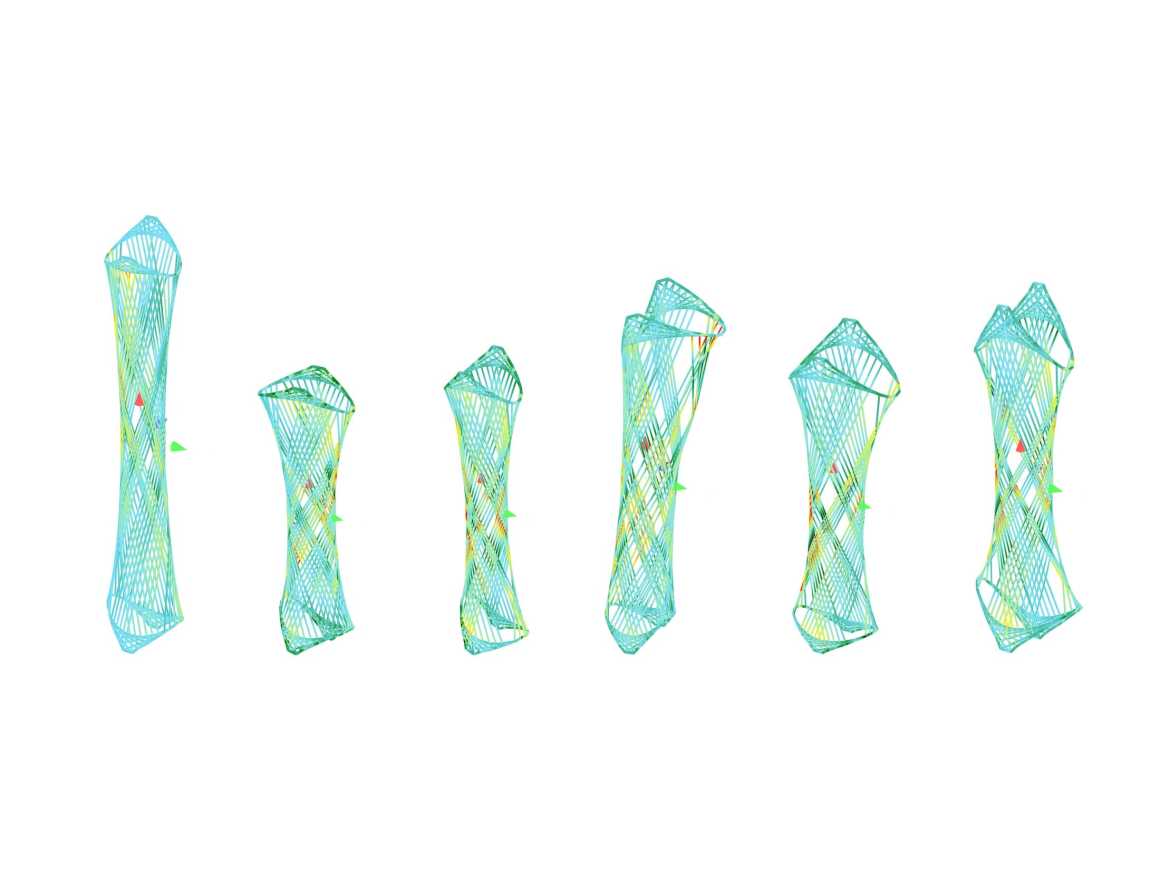
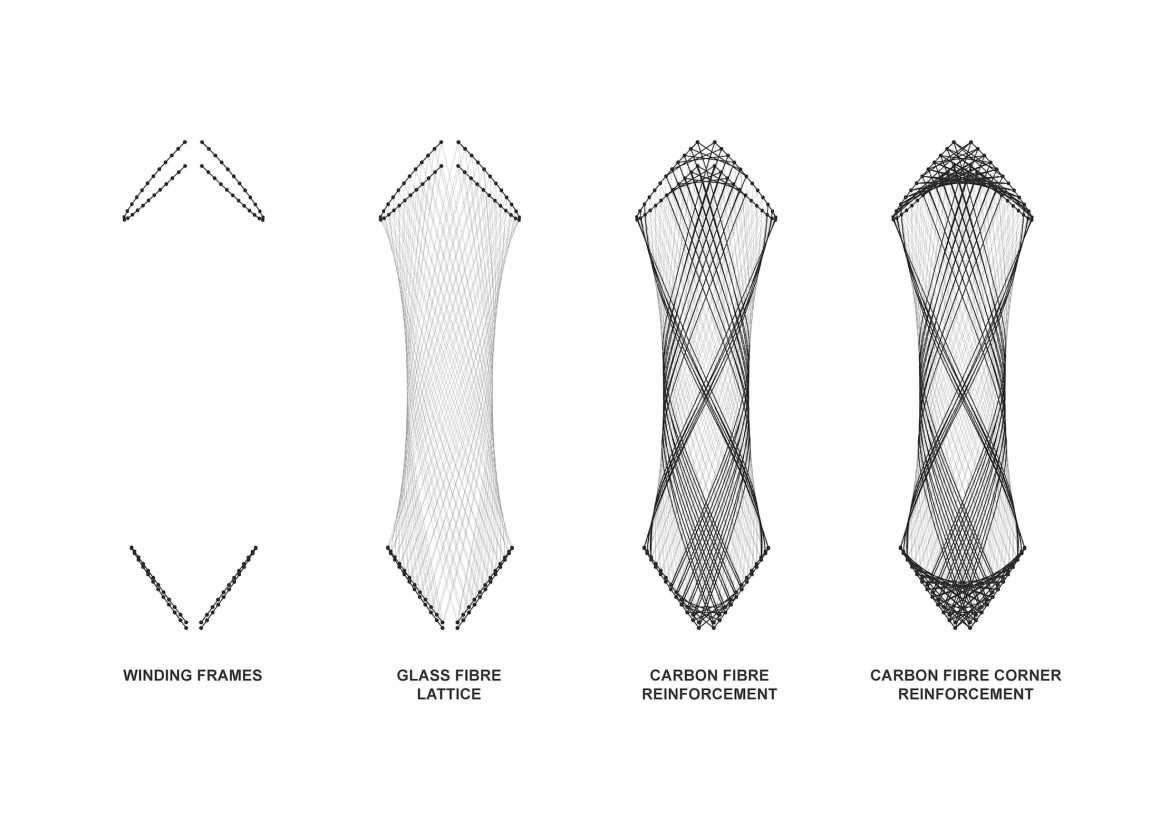
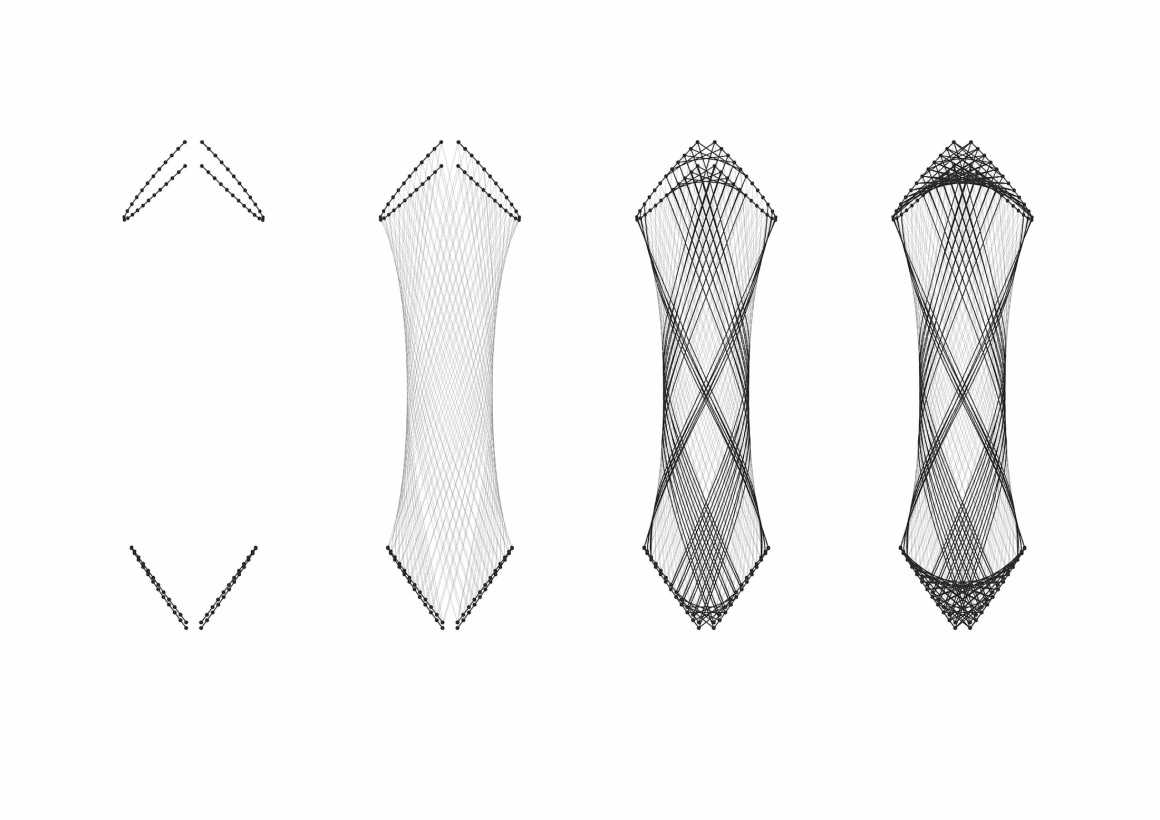
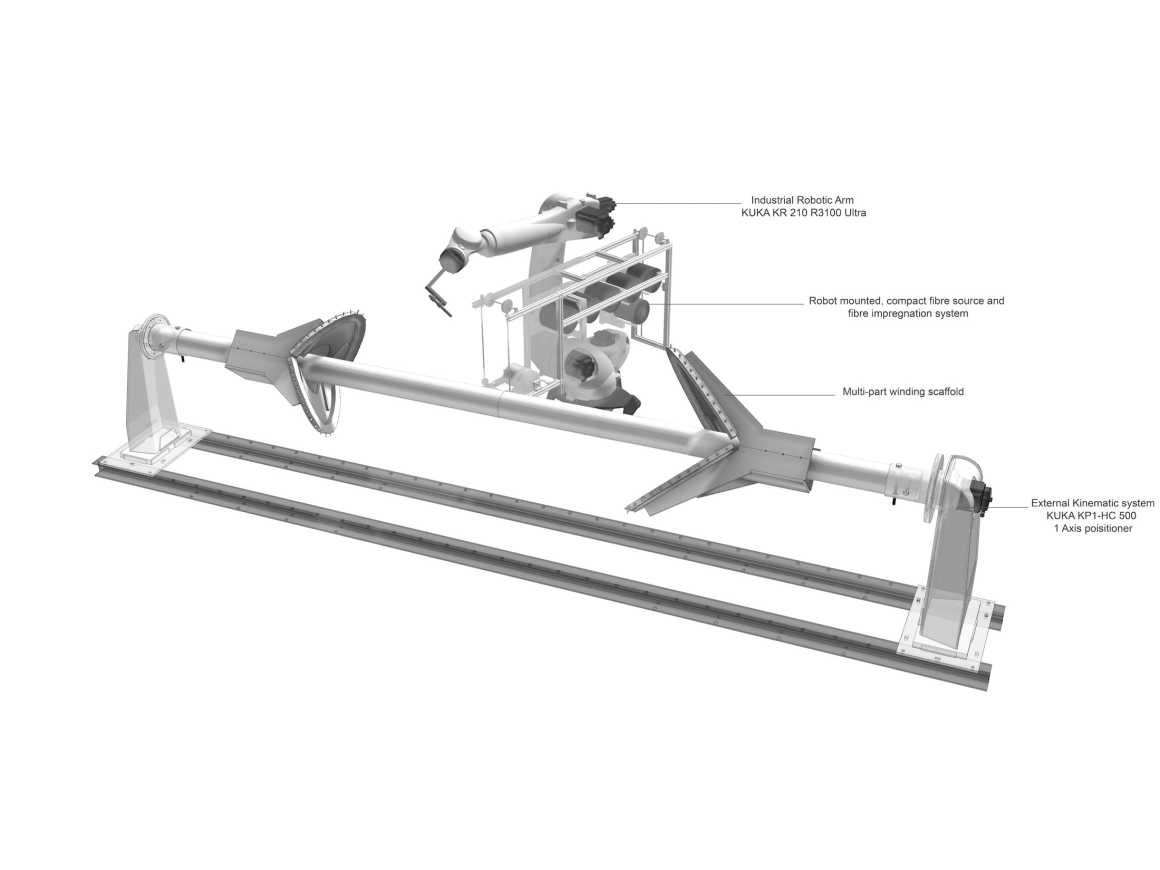
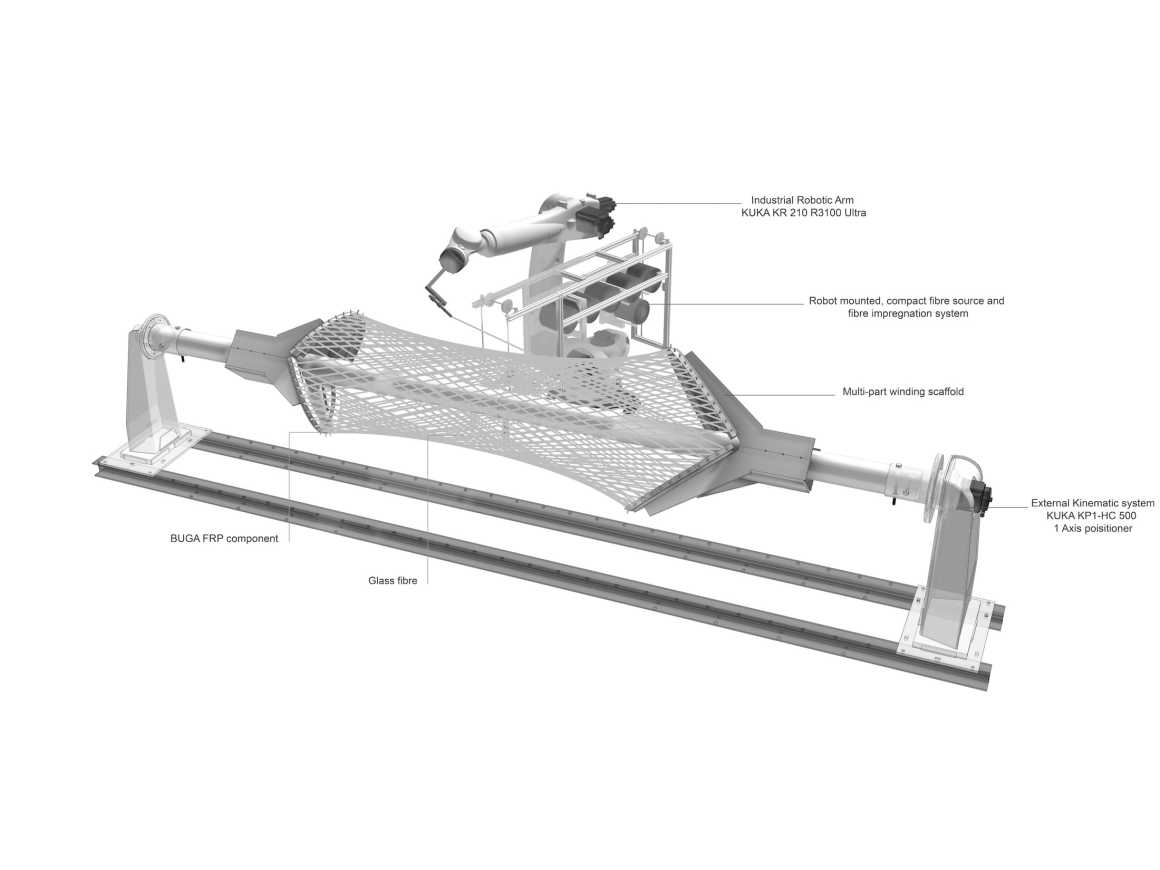
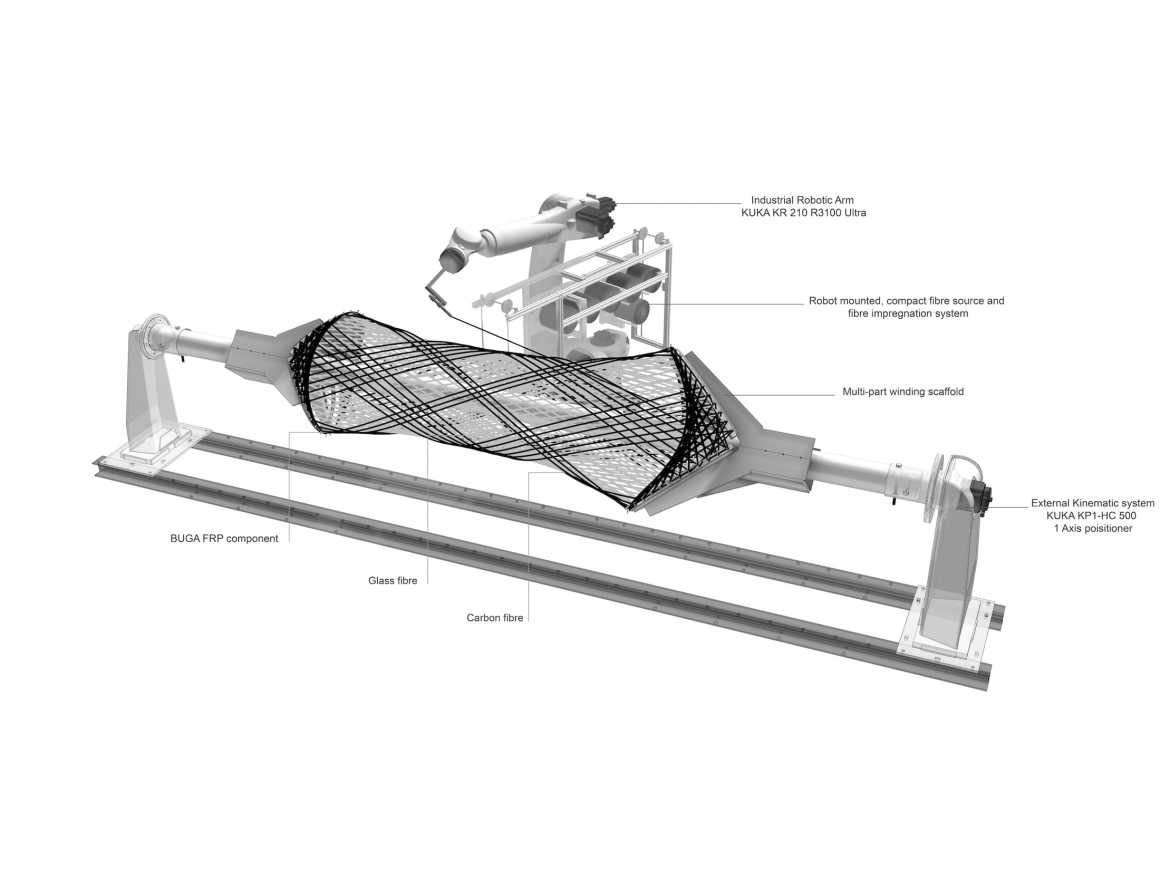

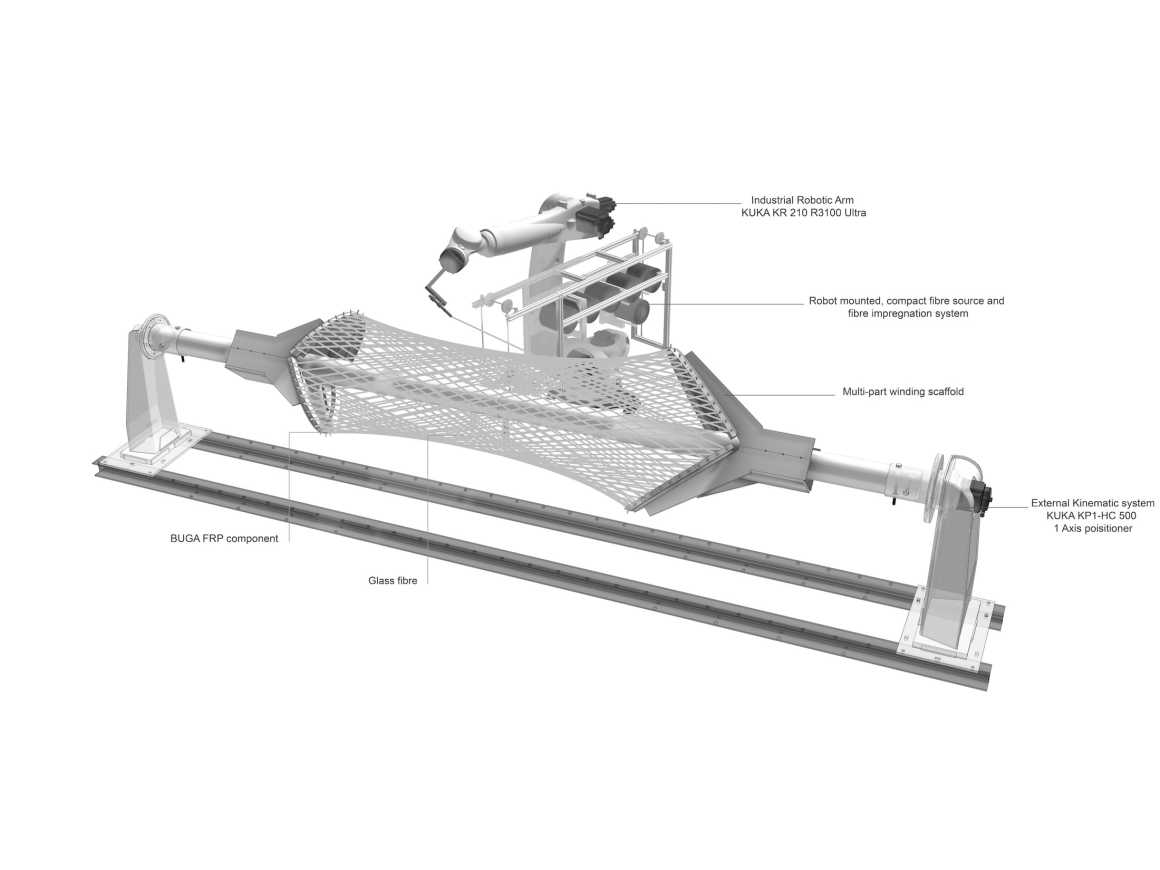

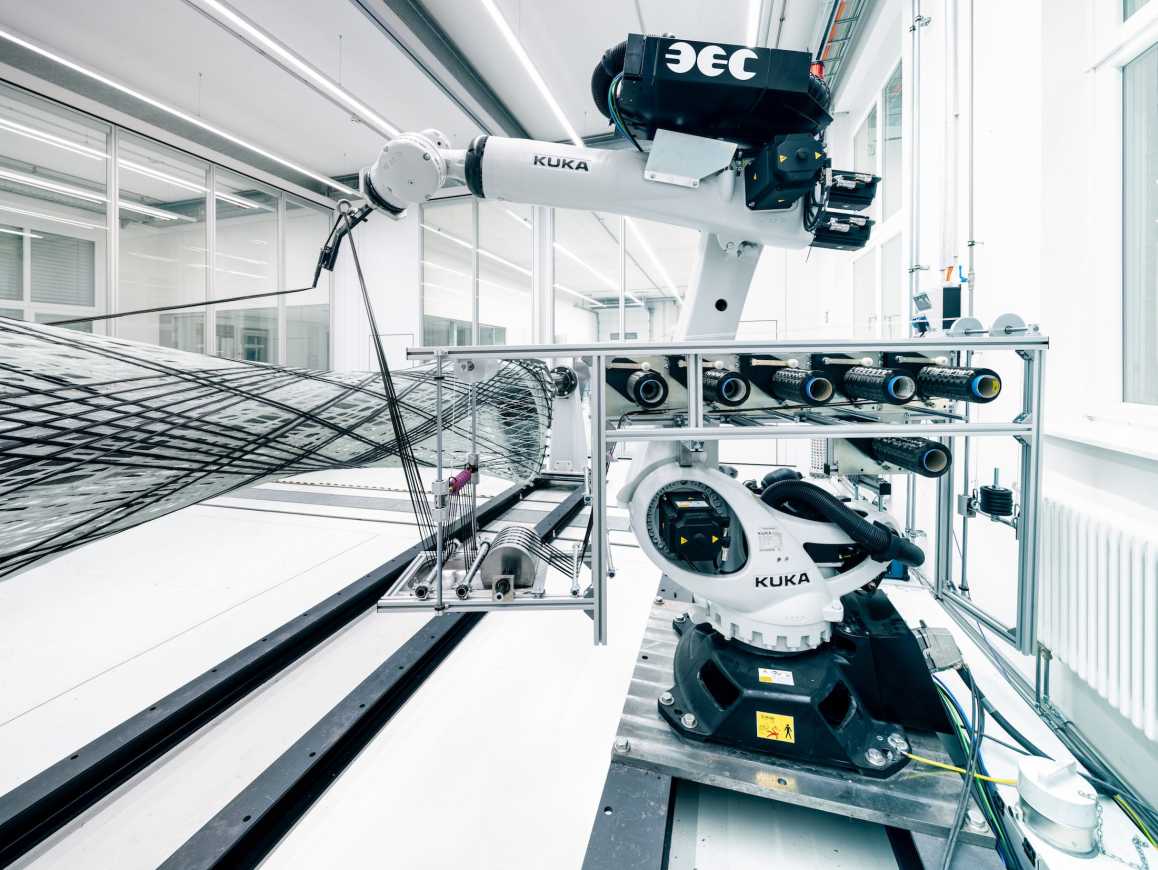
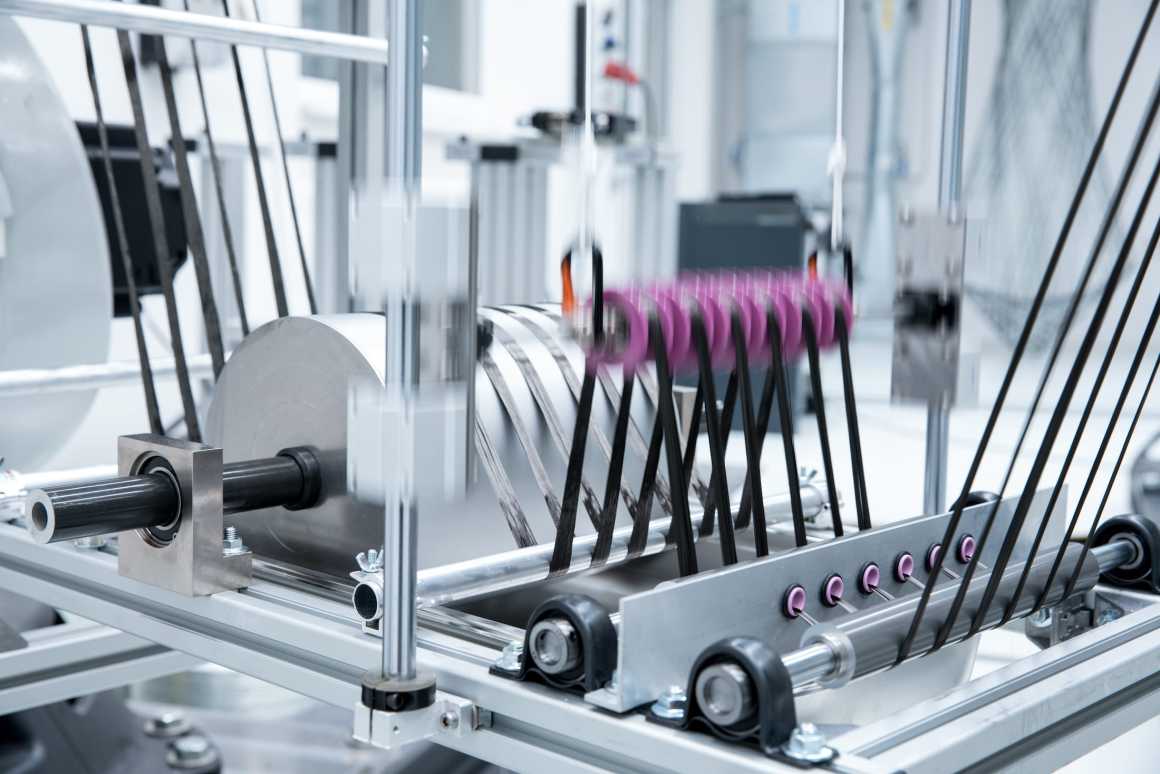
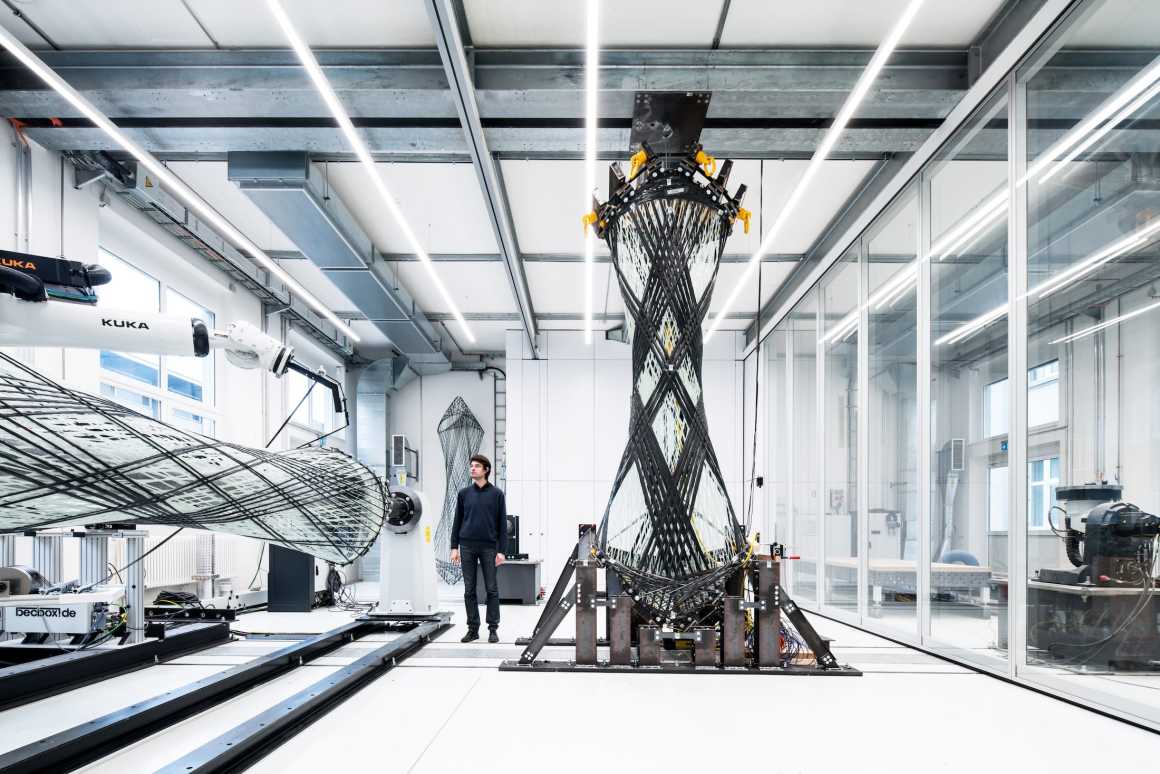
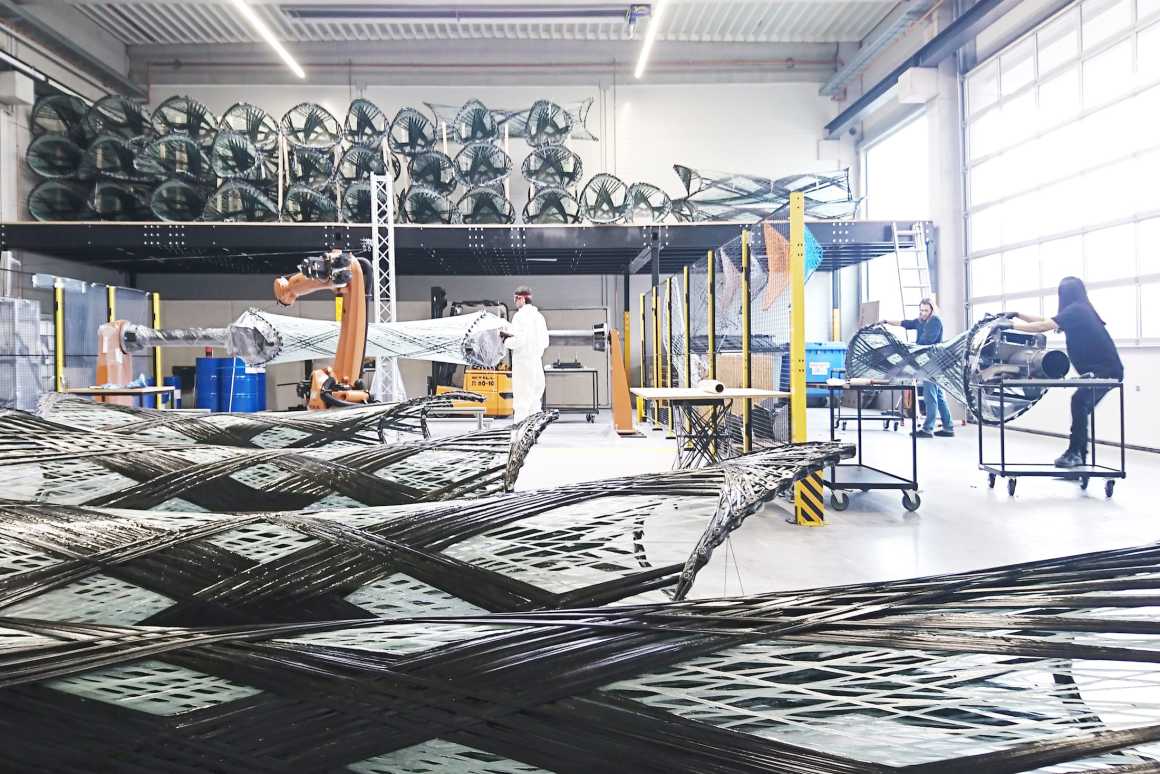
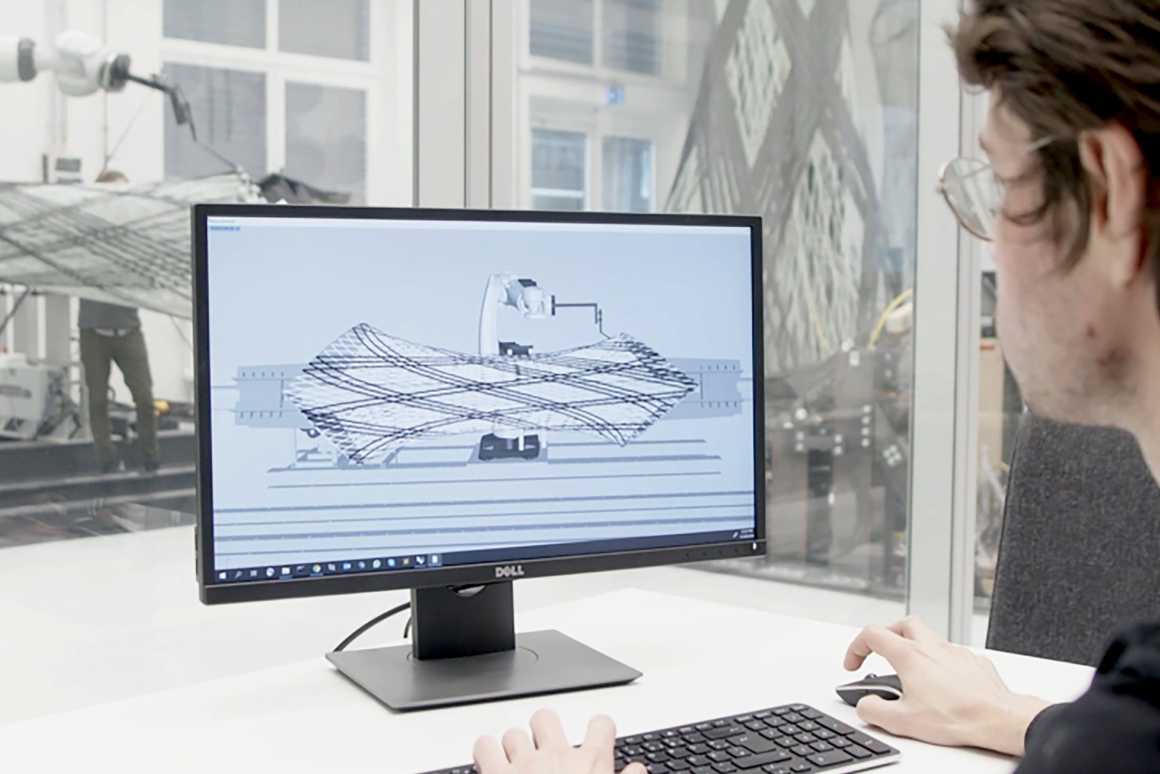



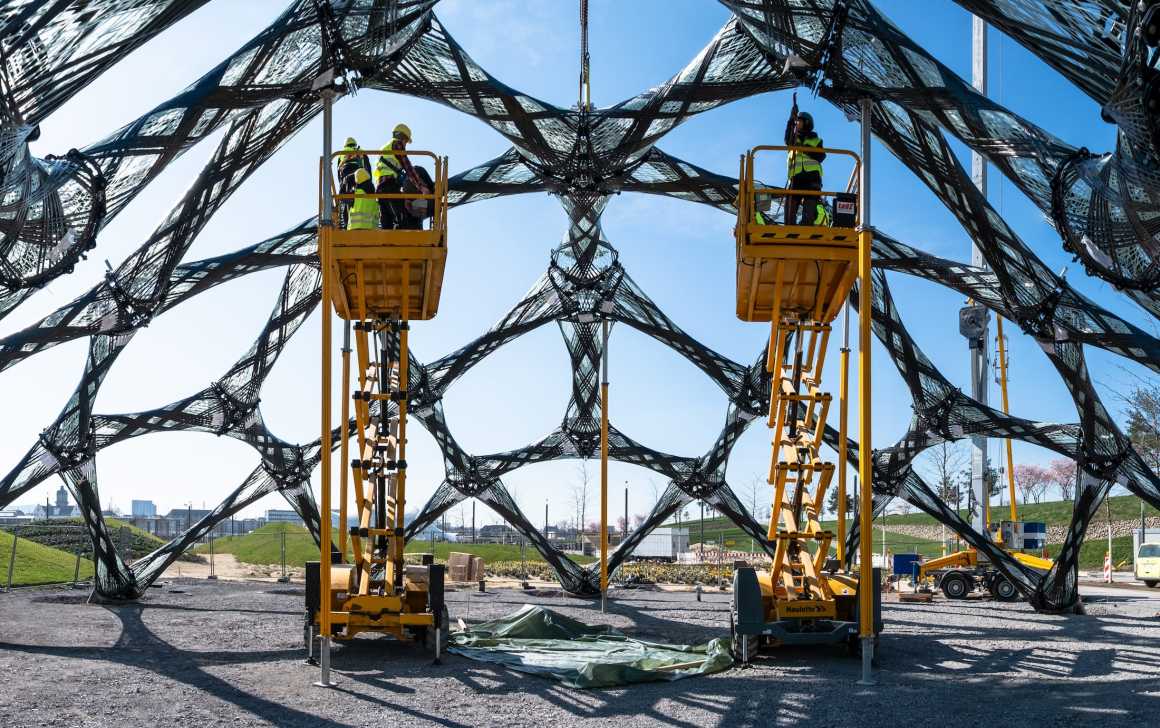


0 Comments